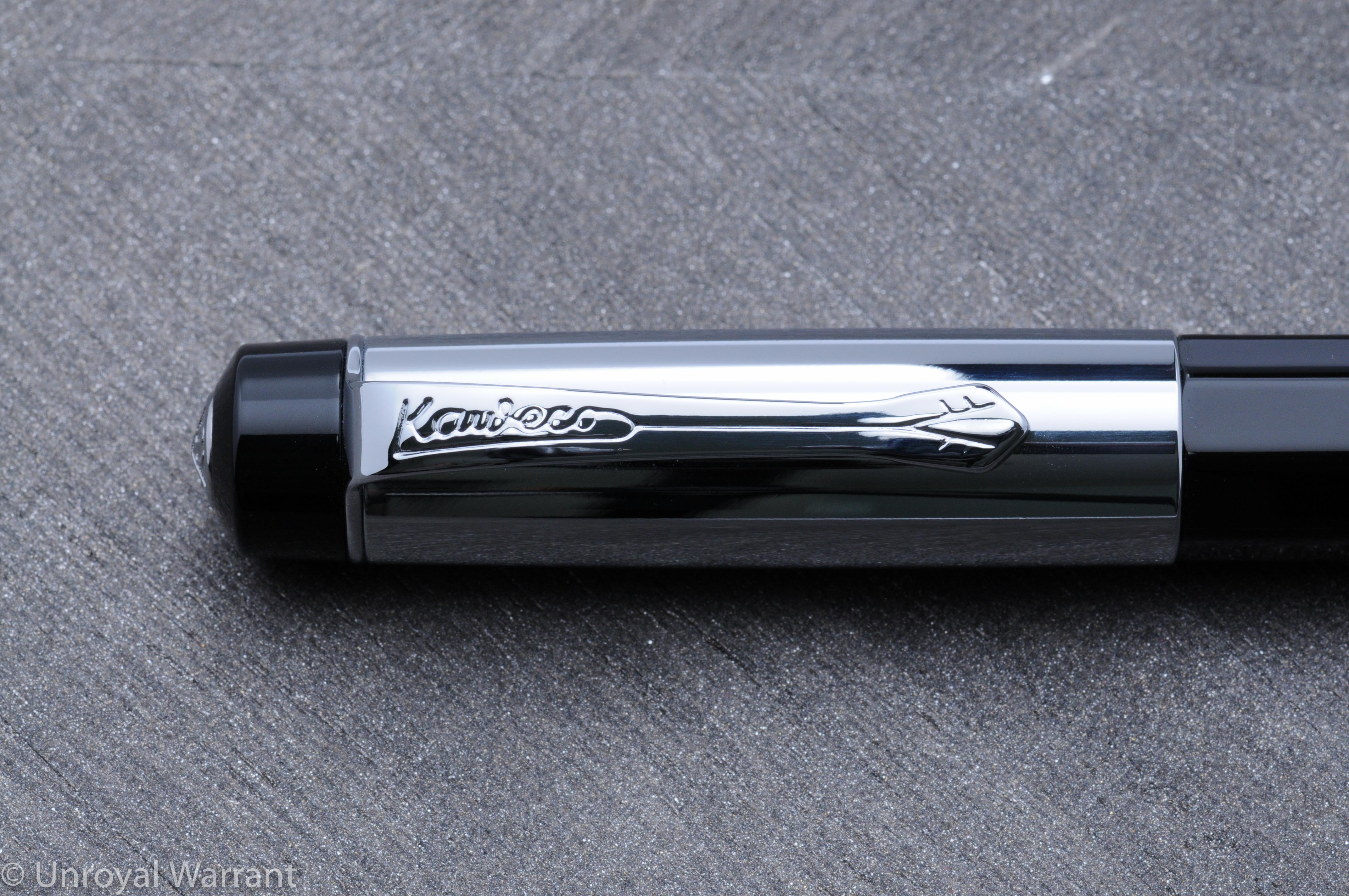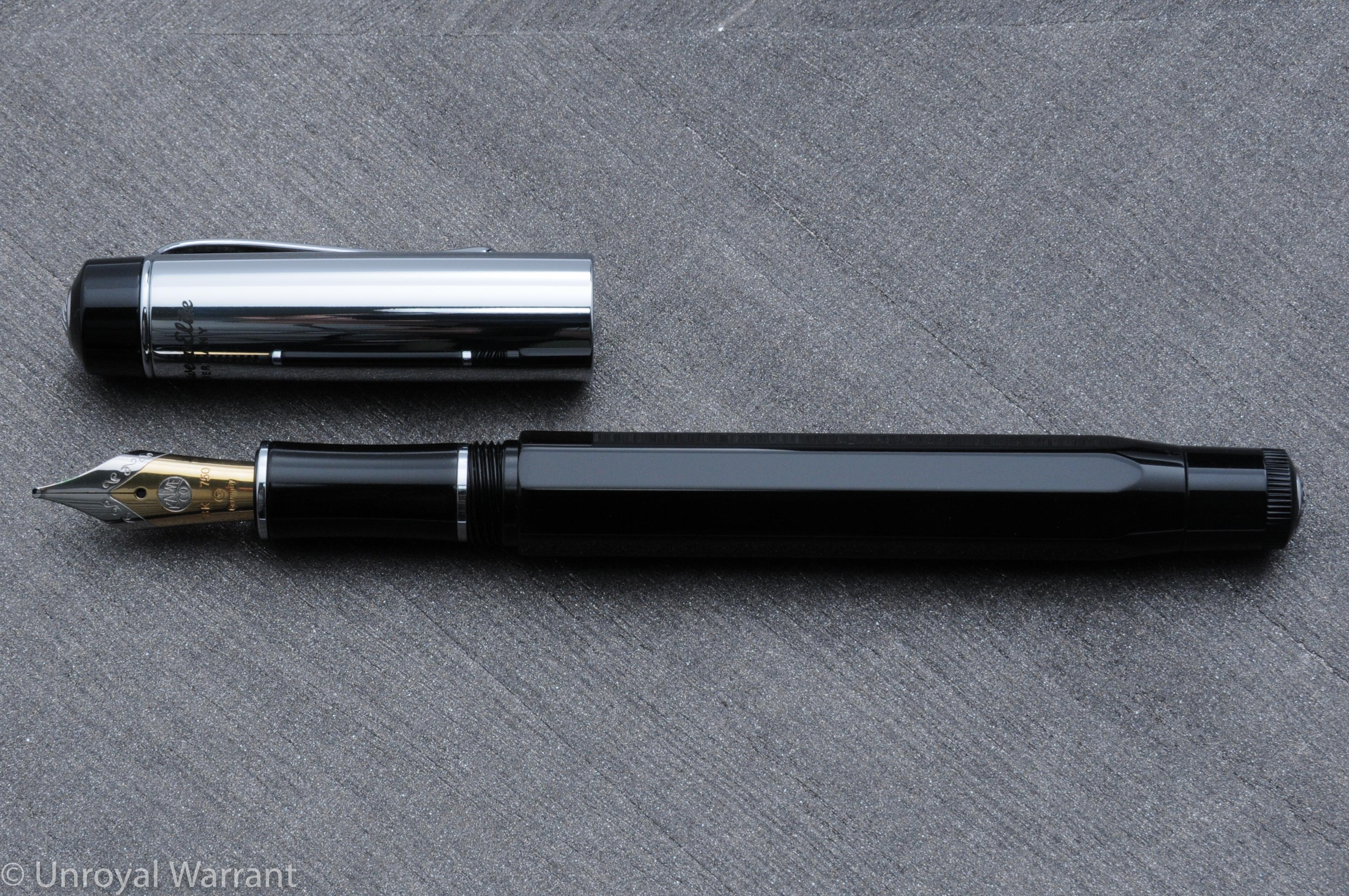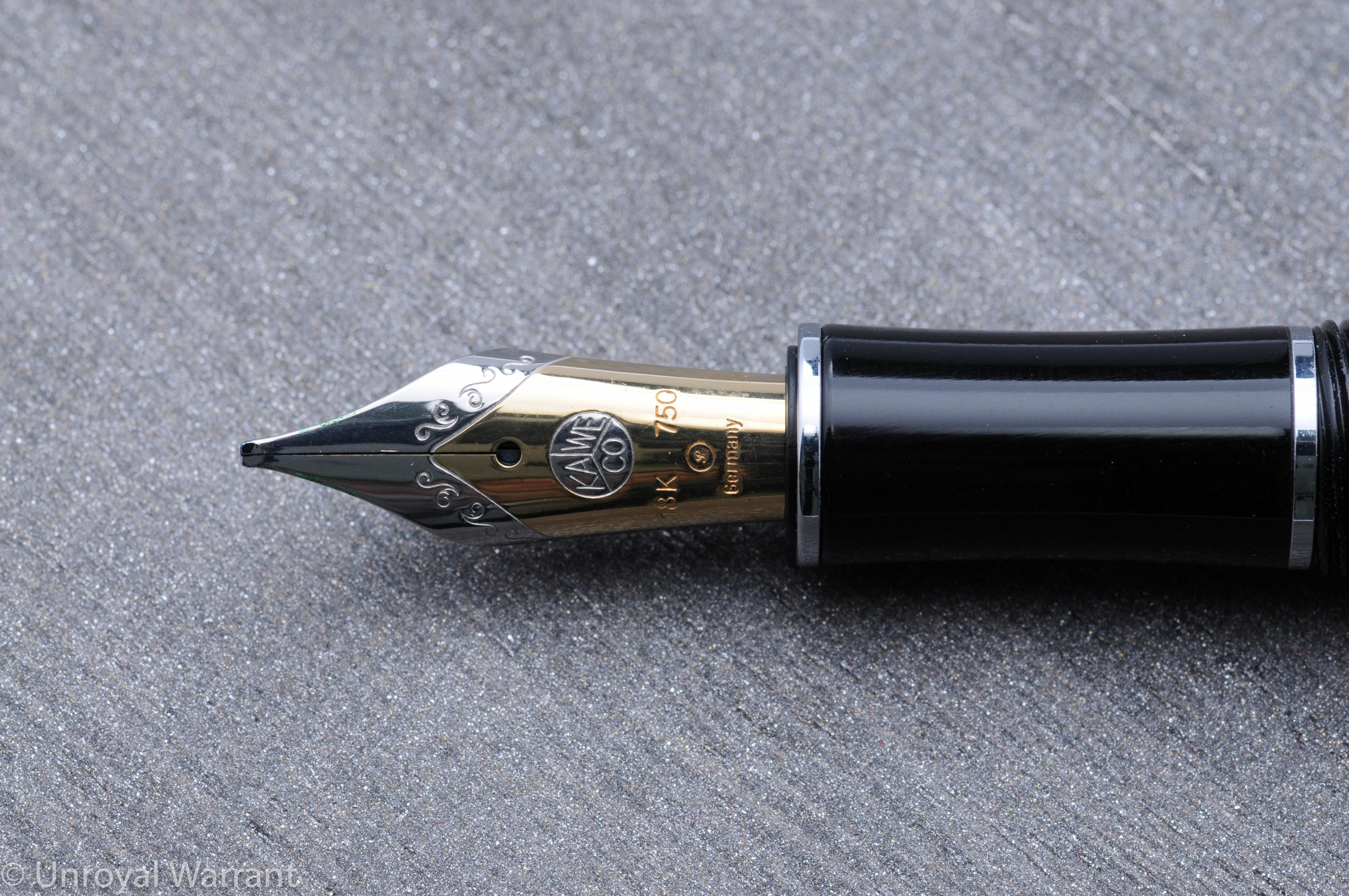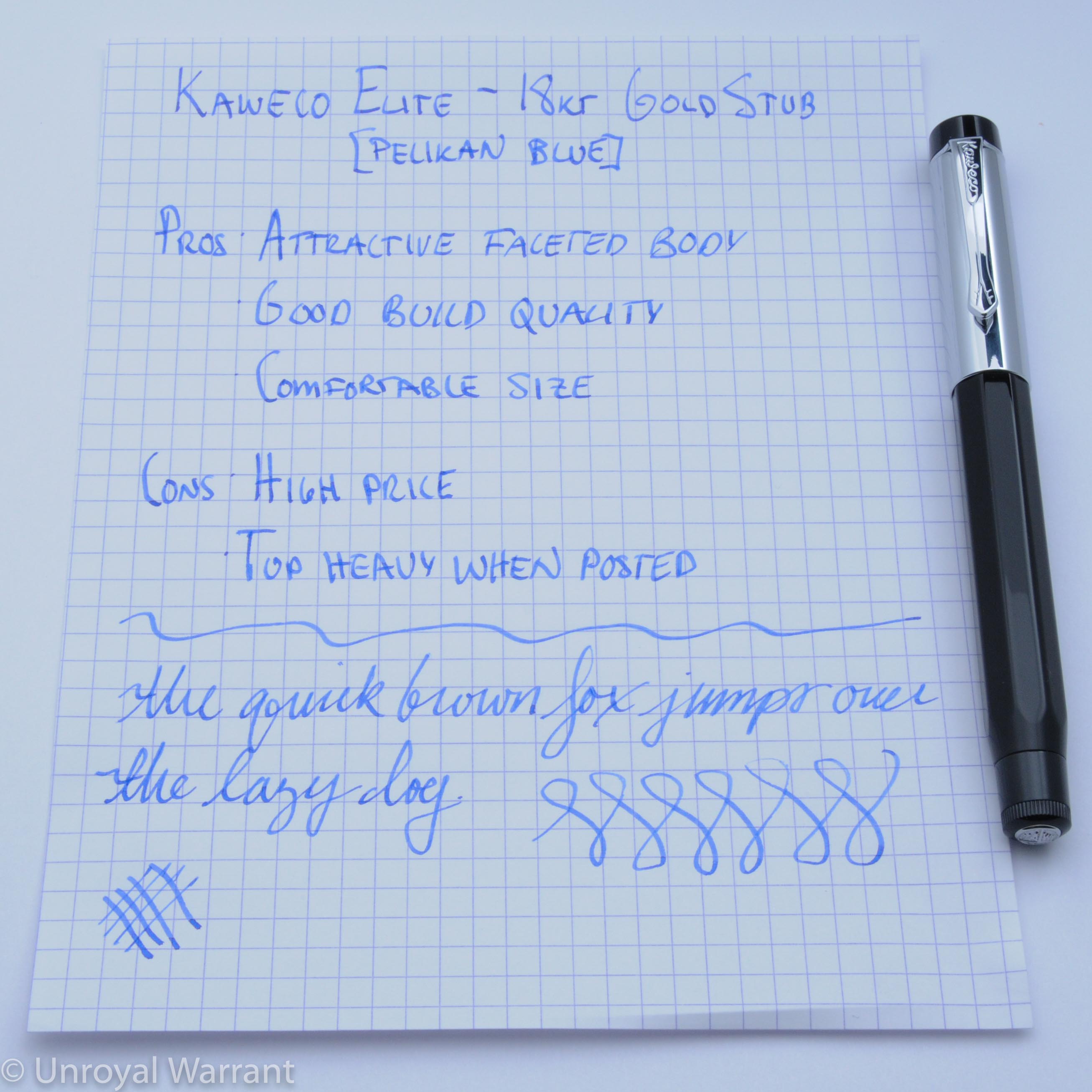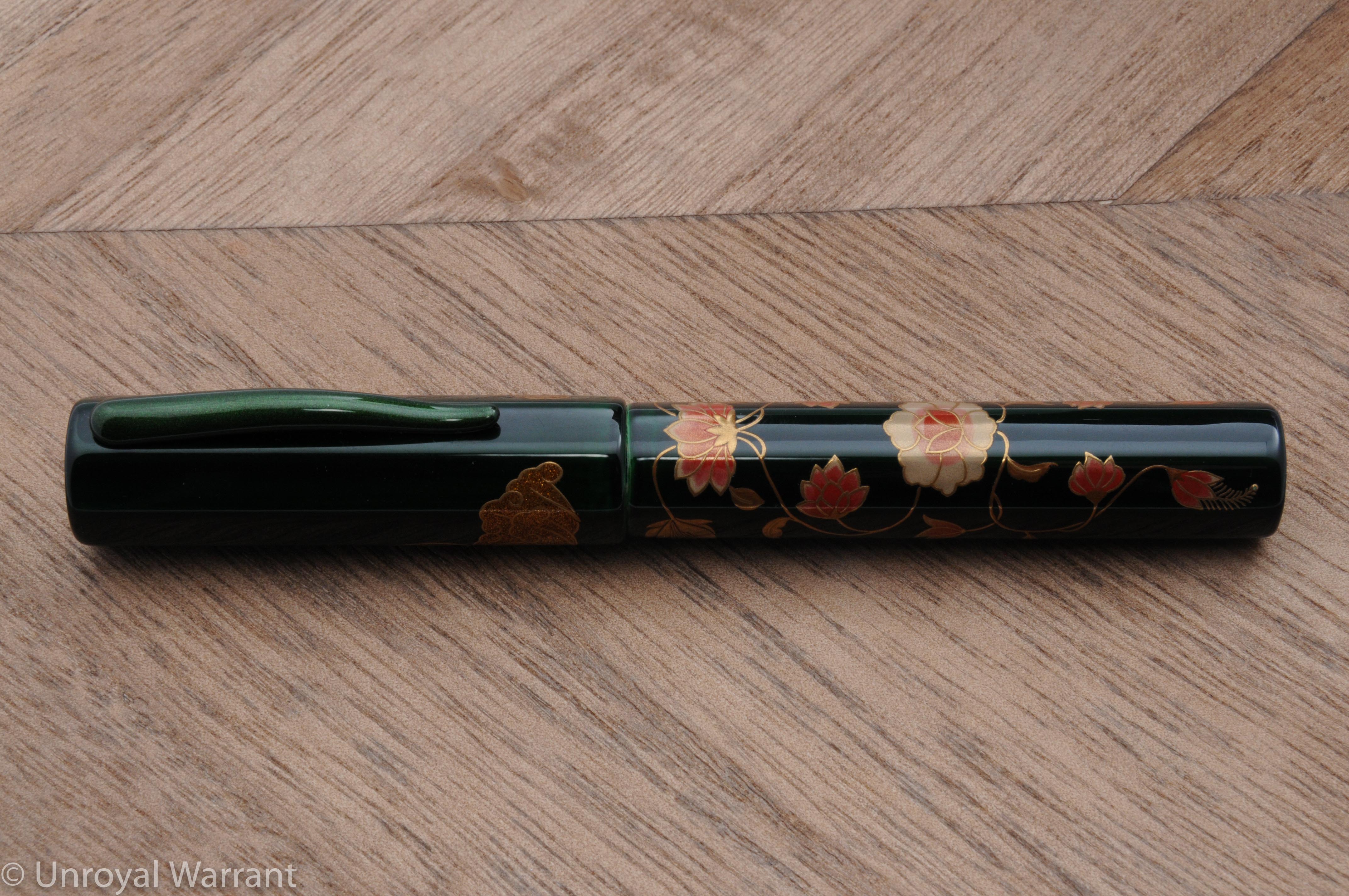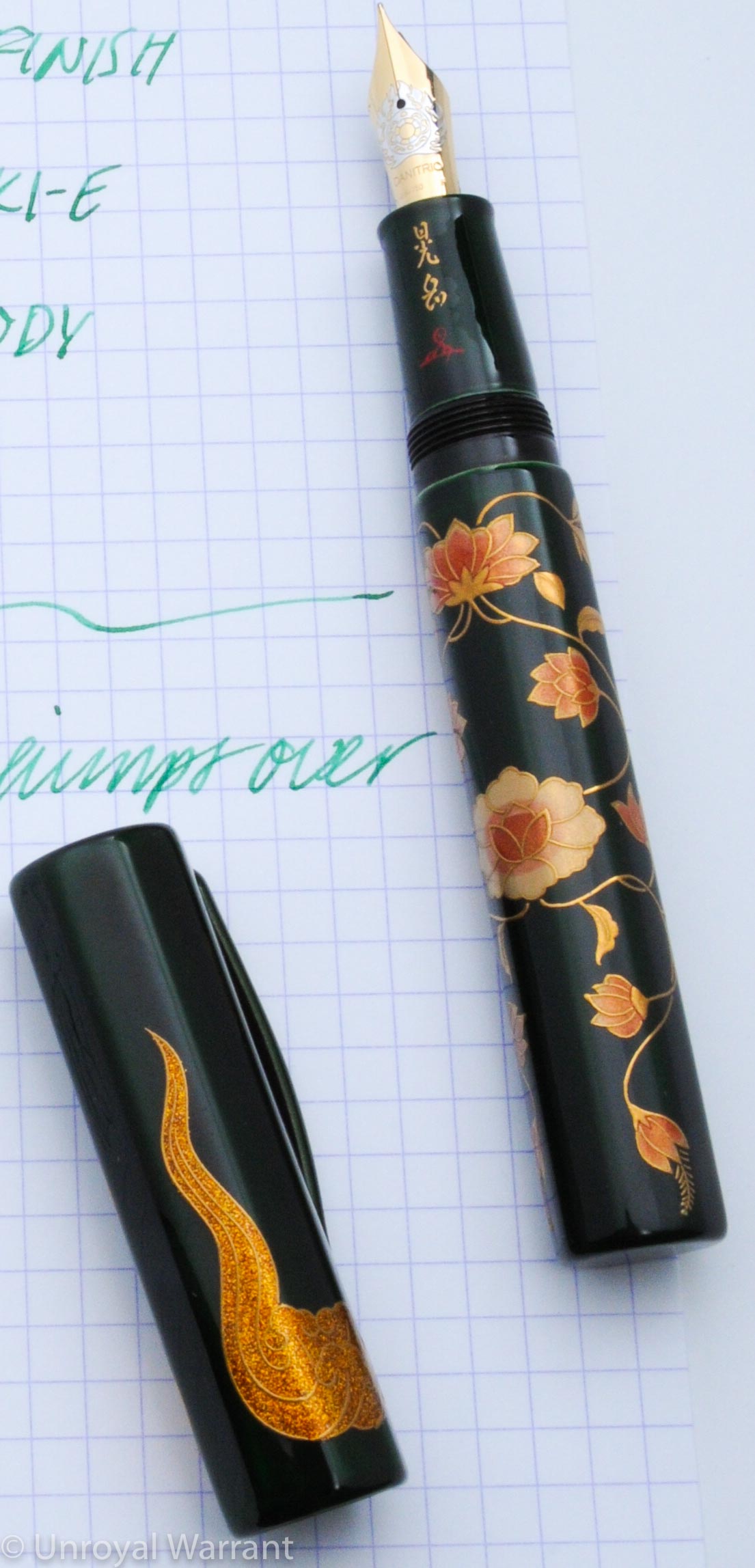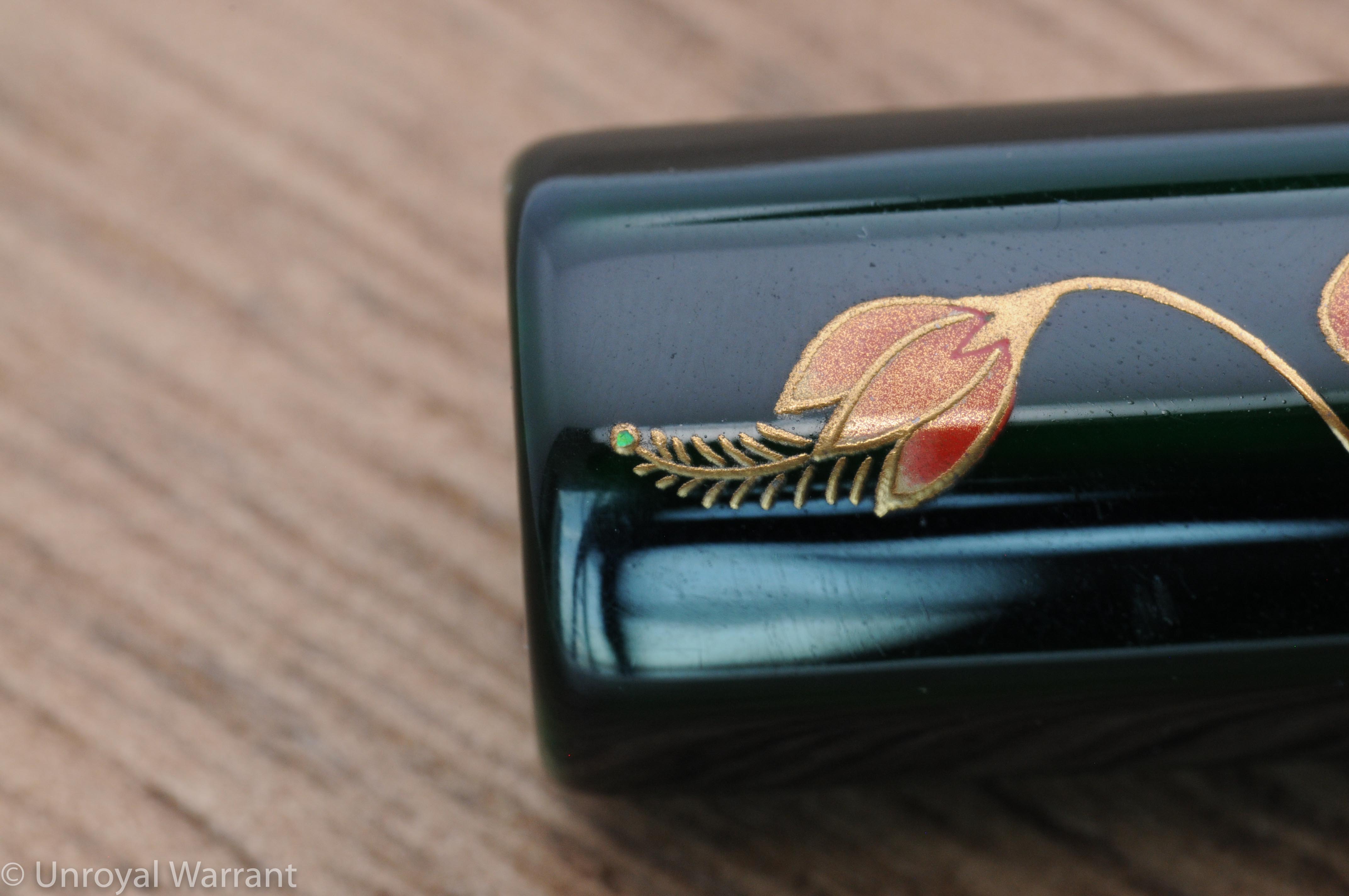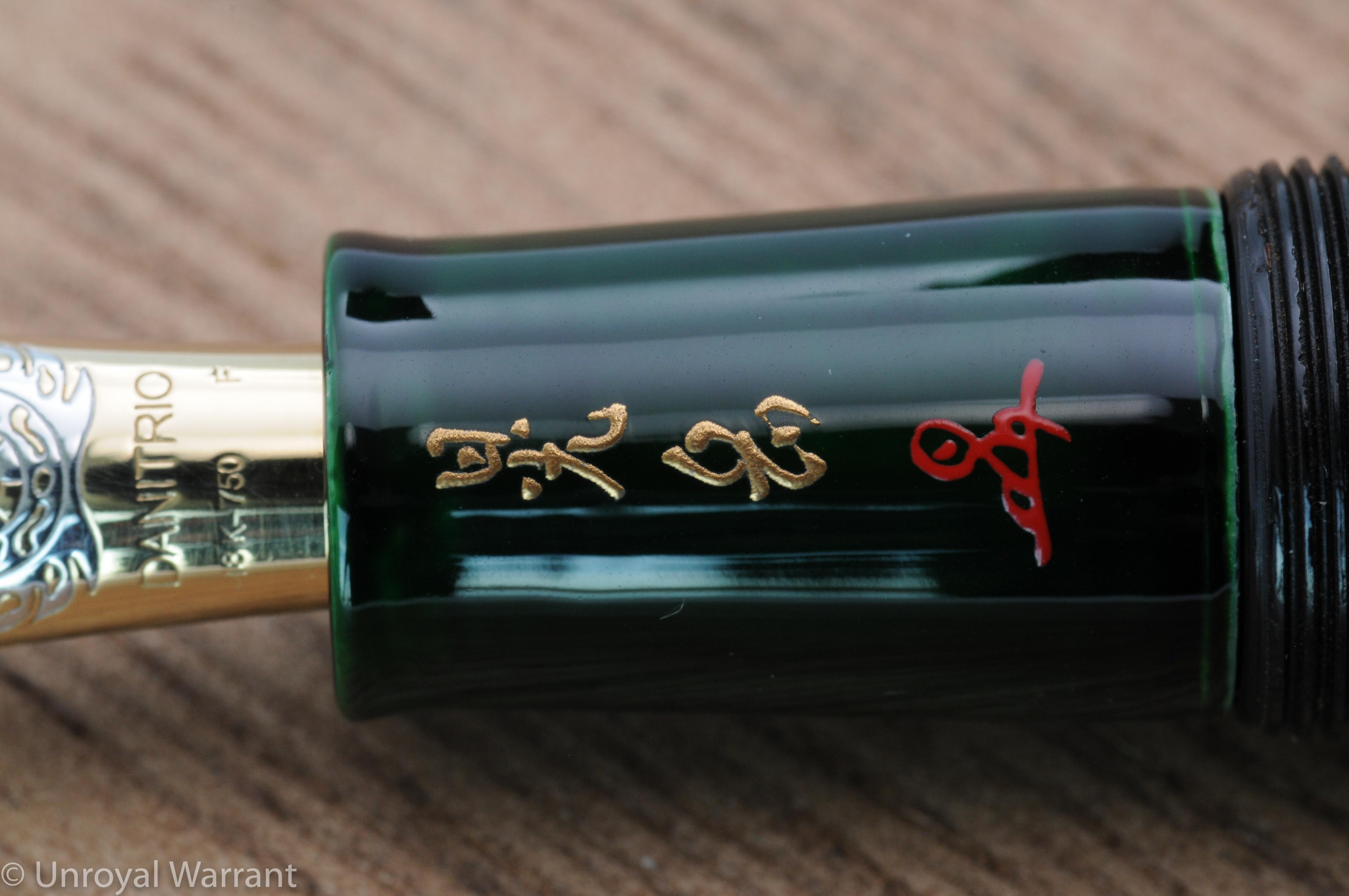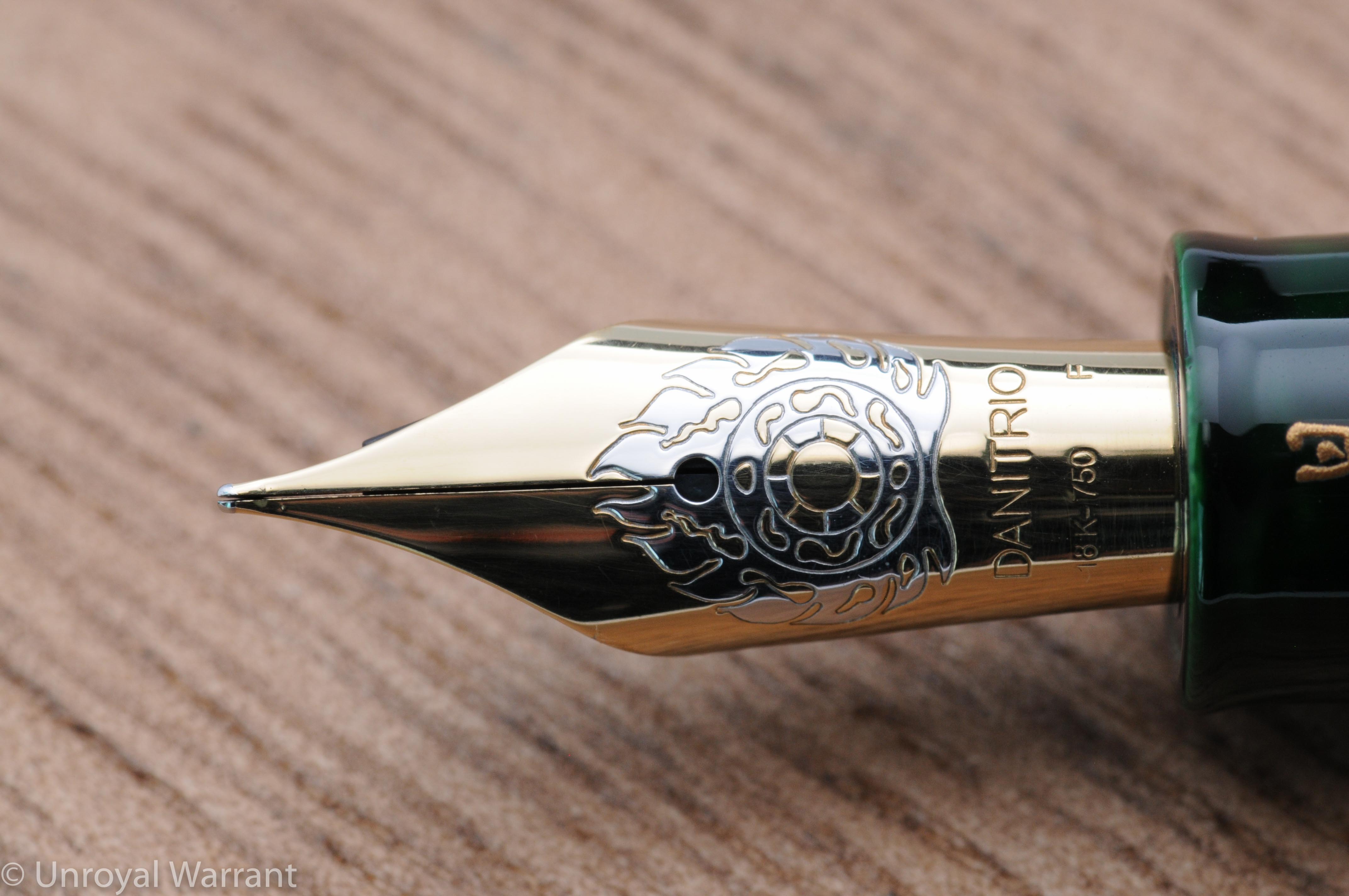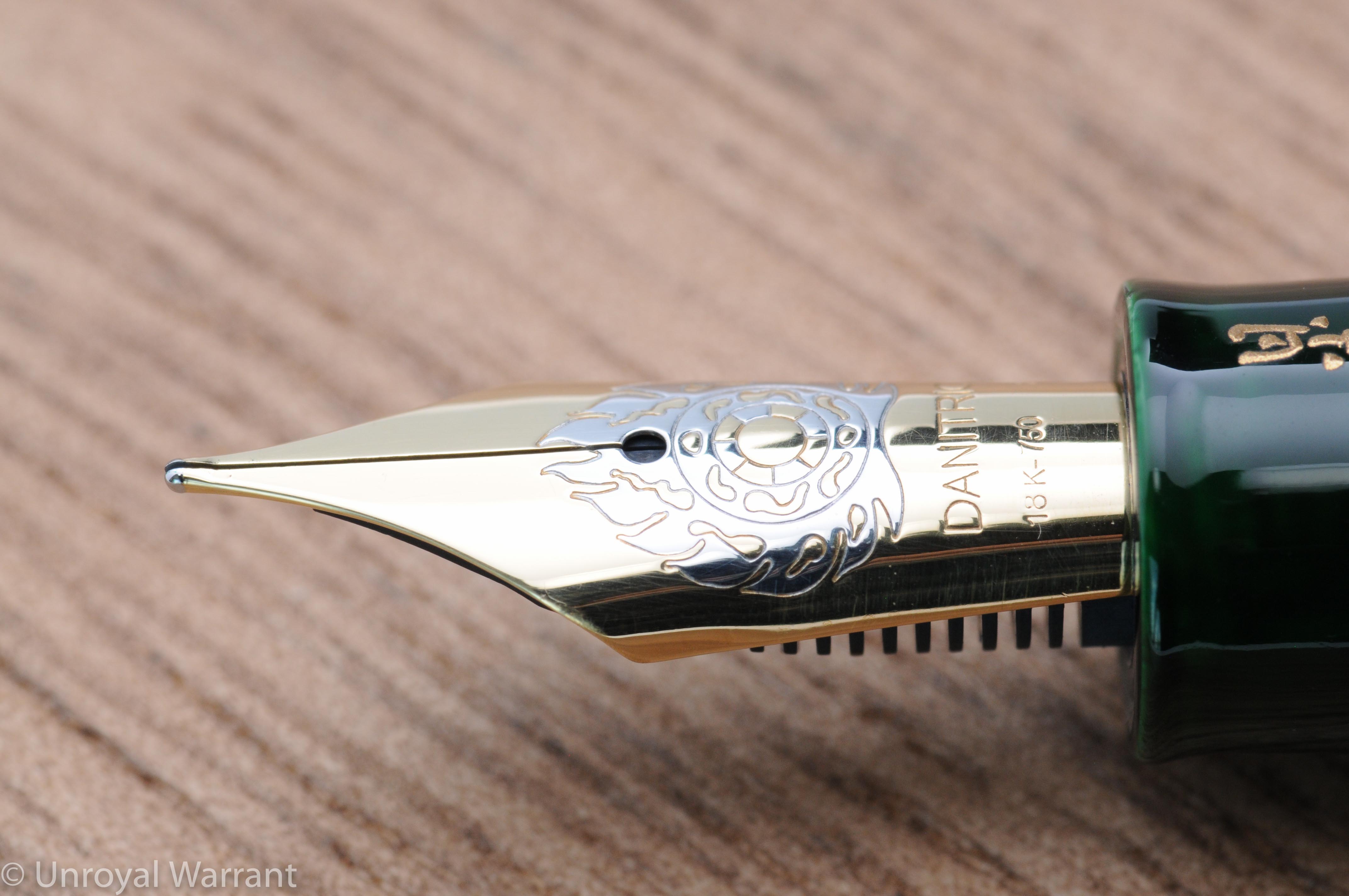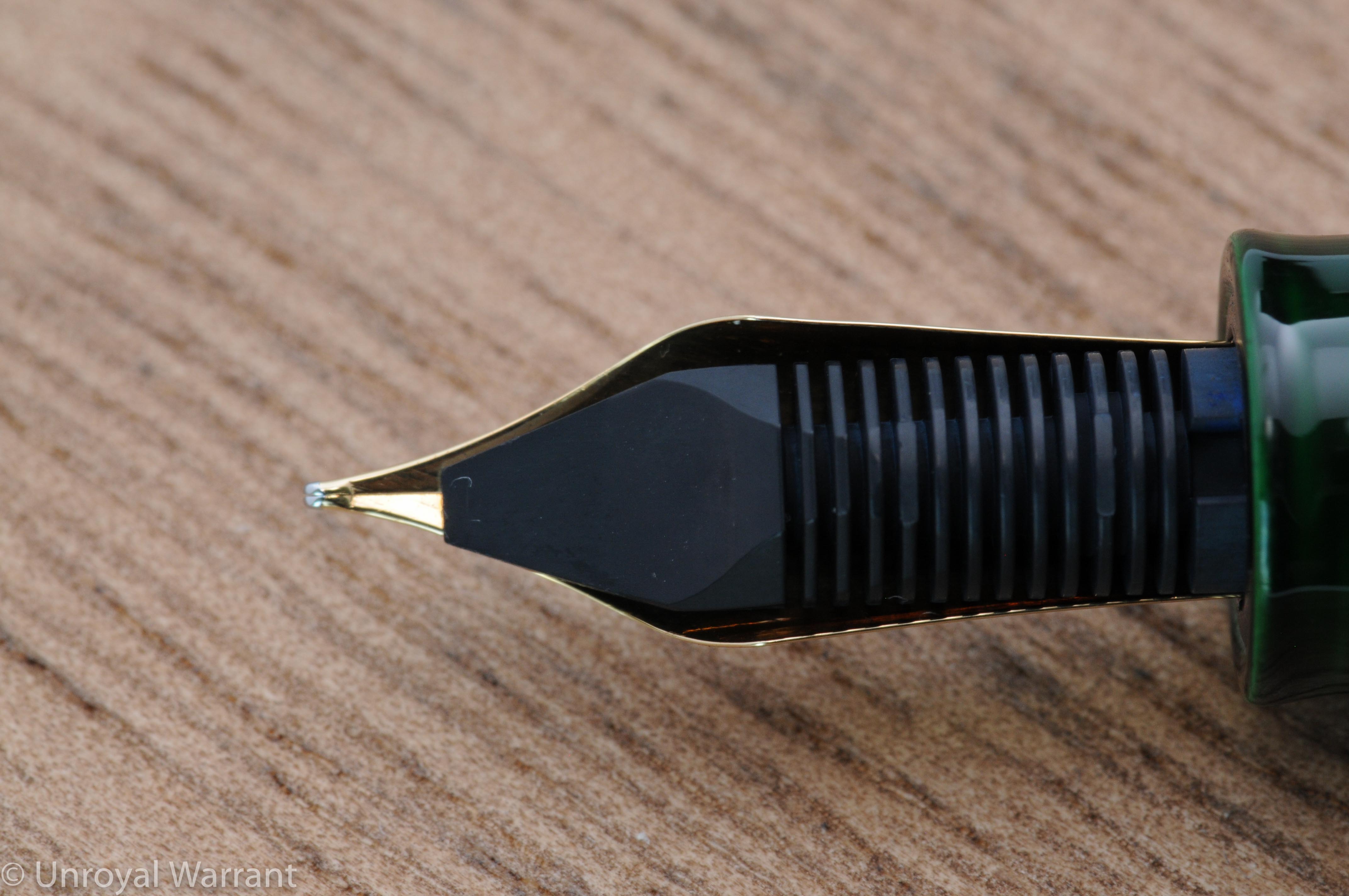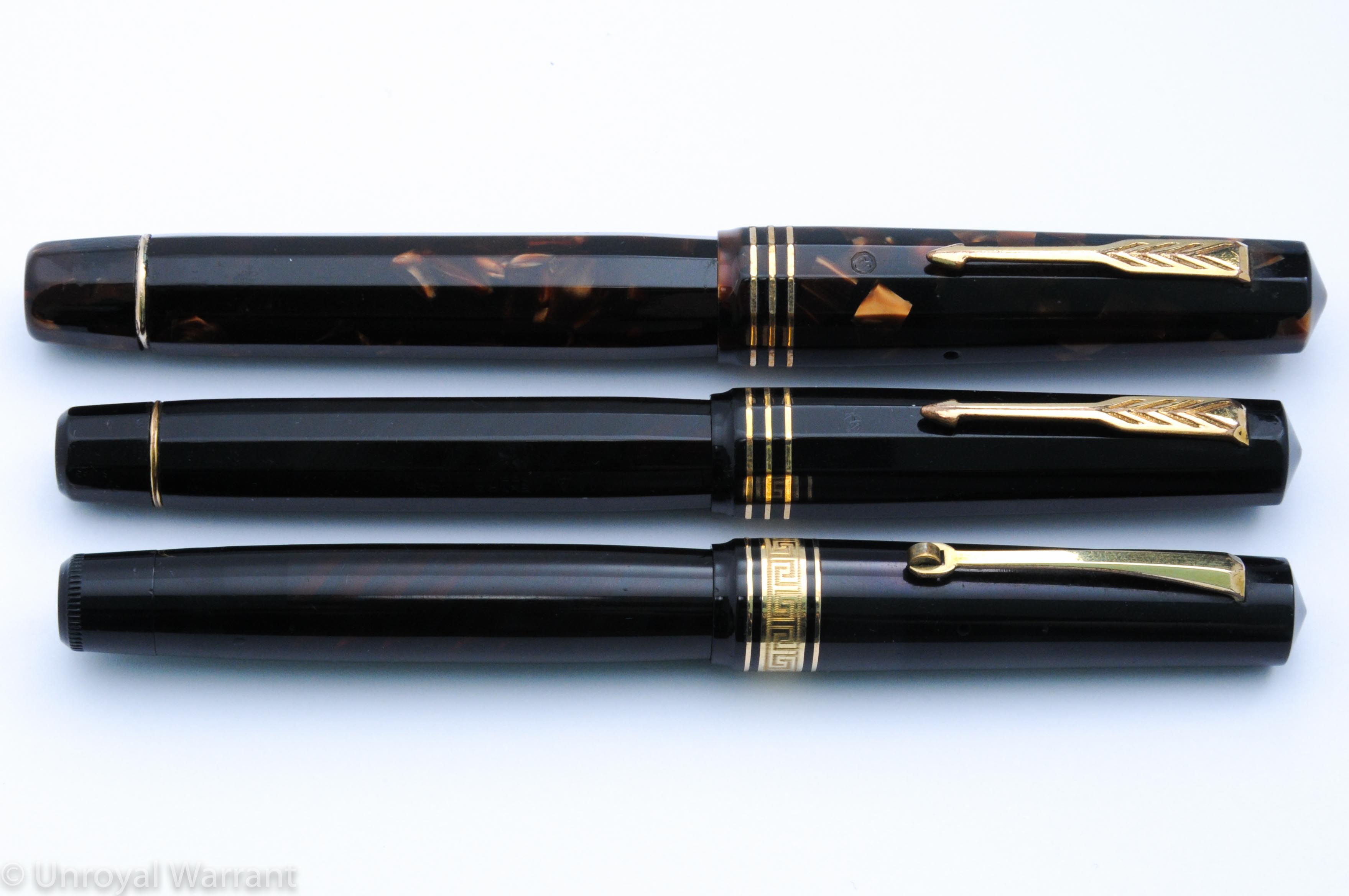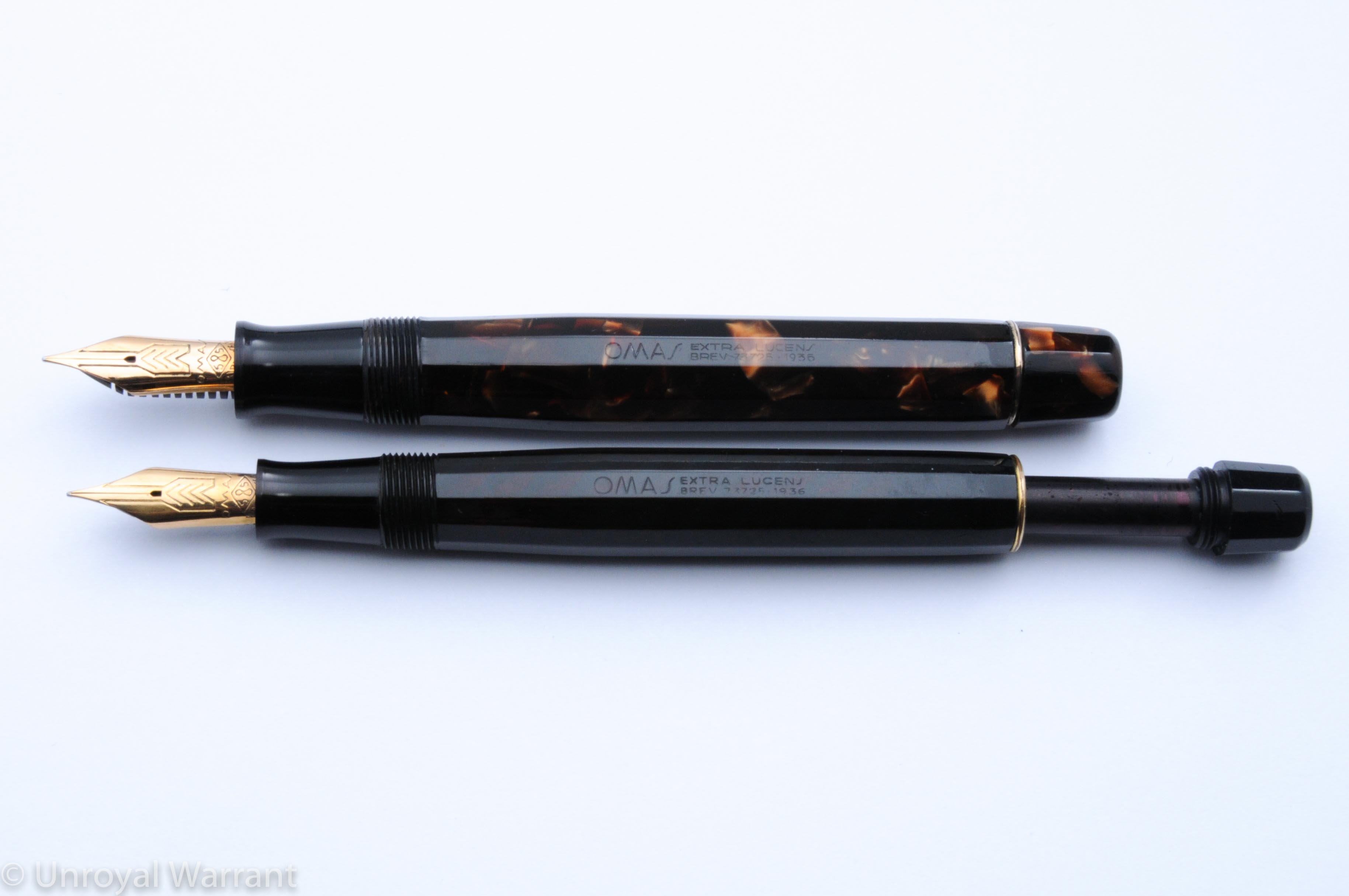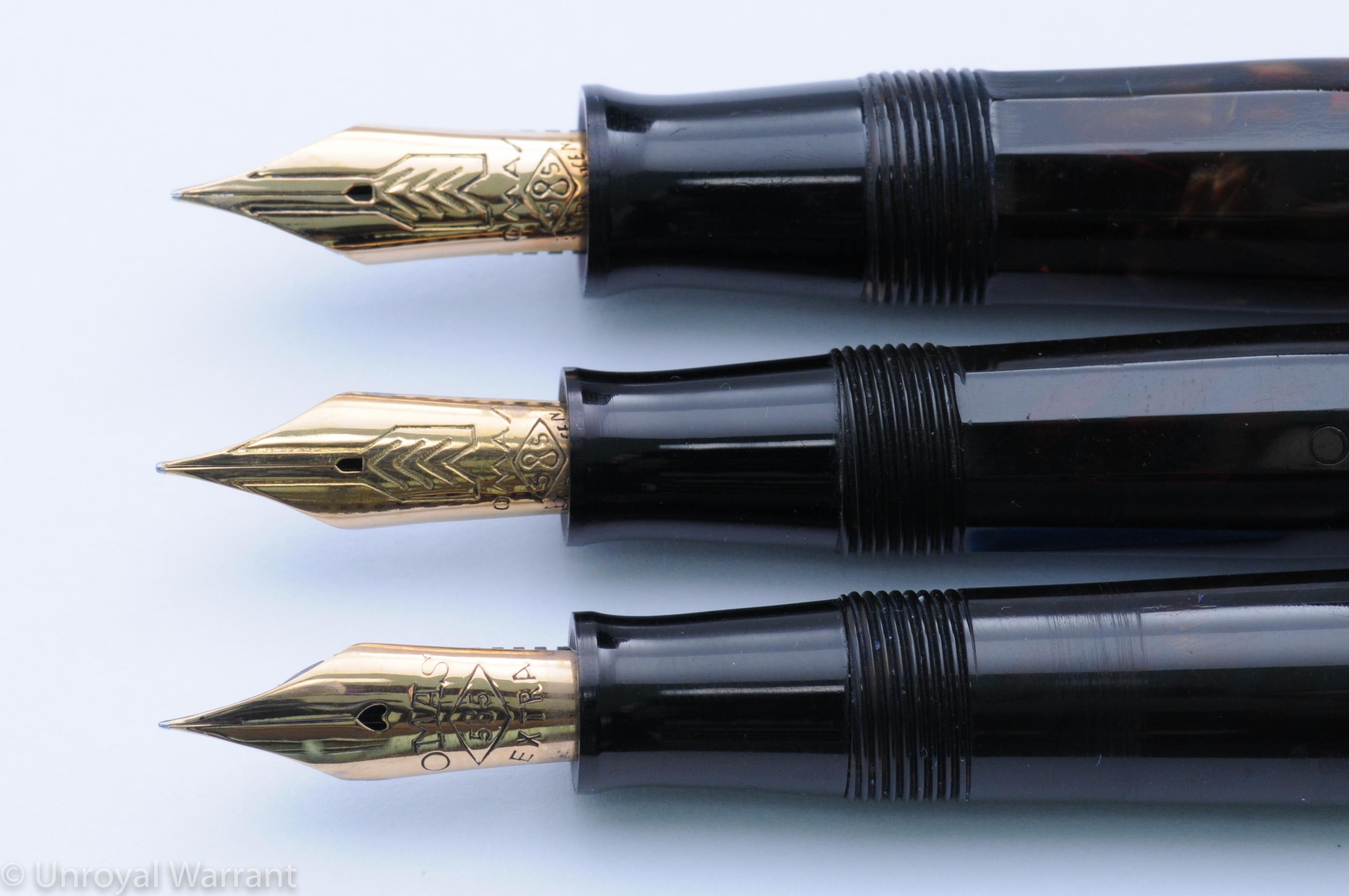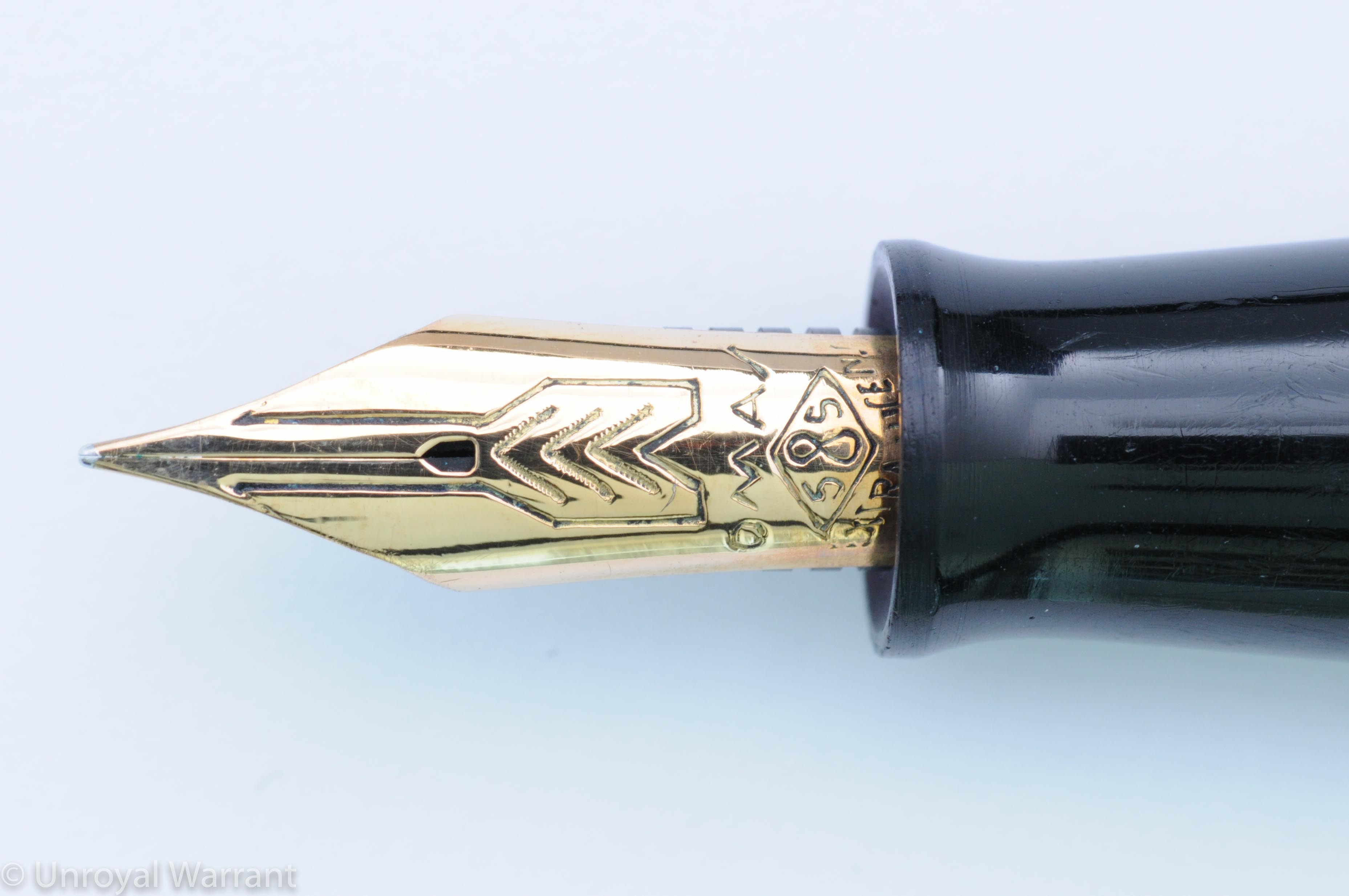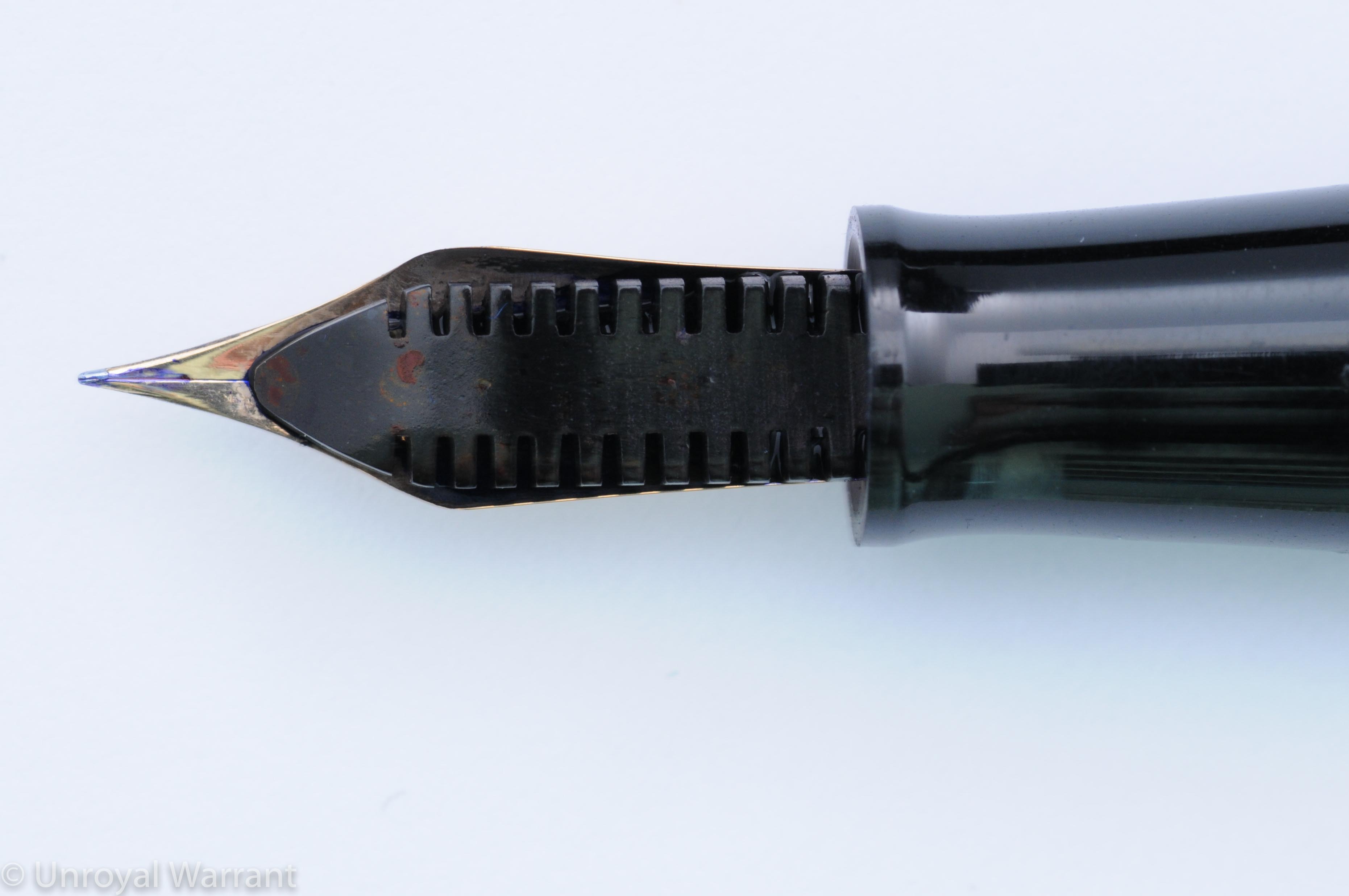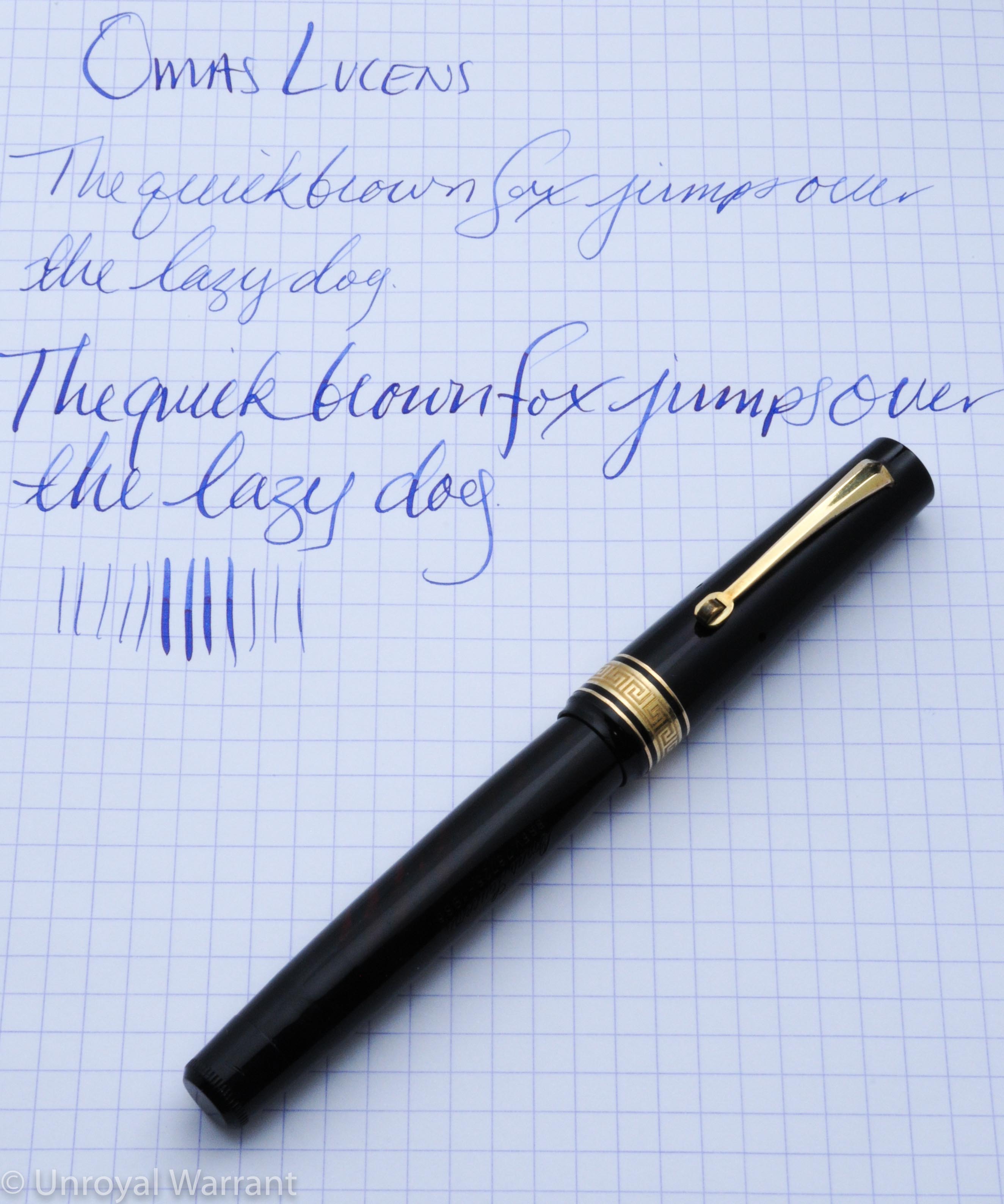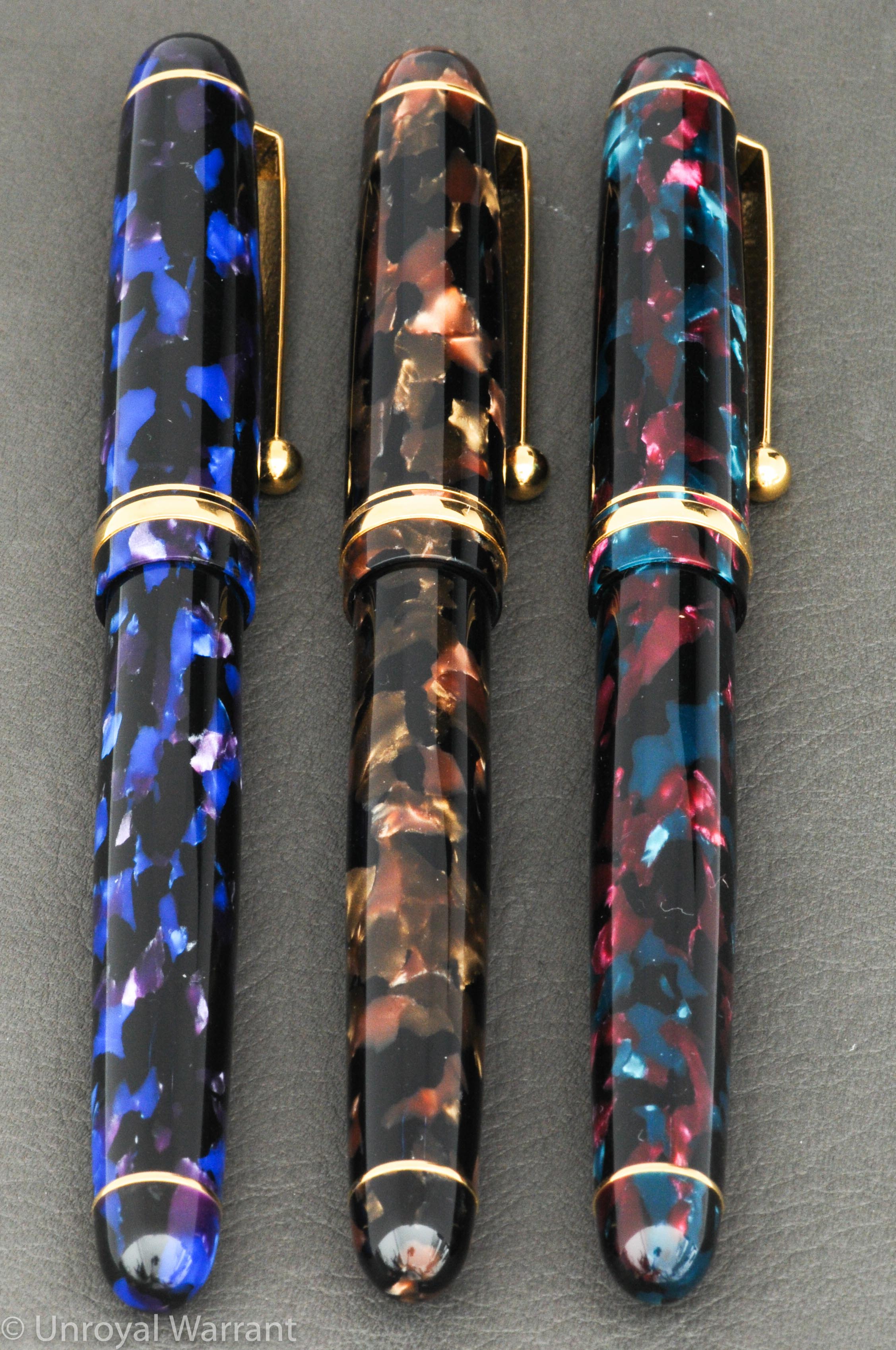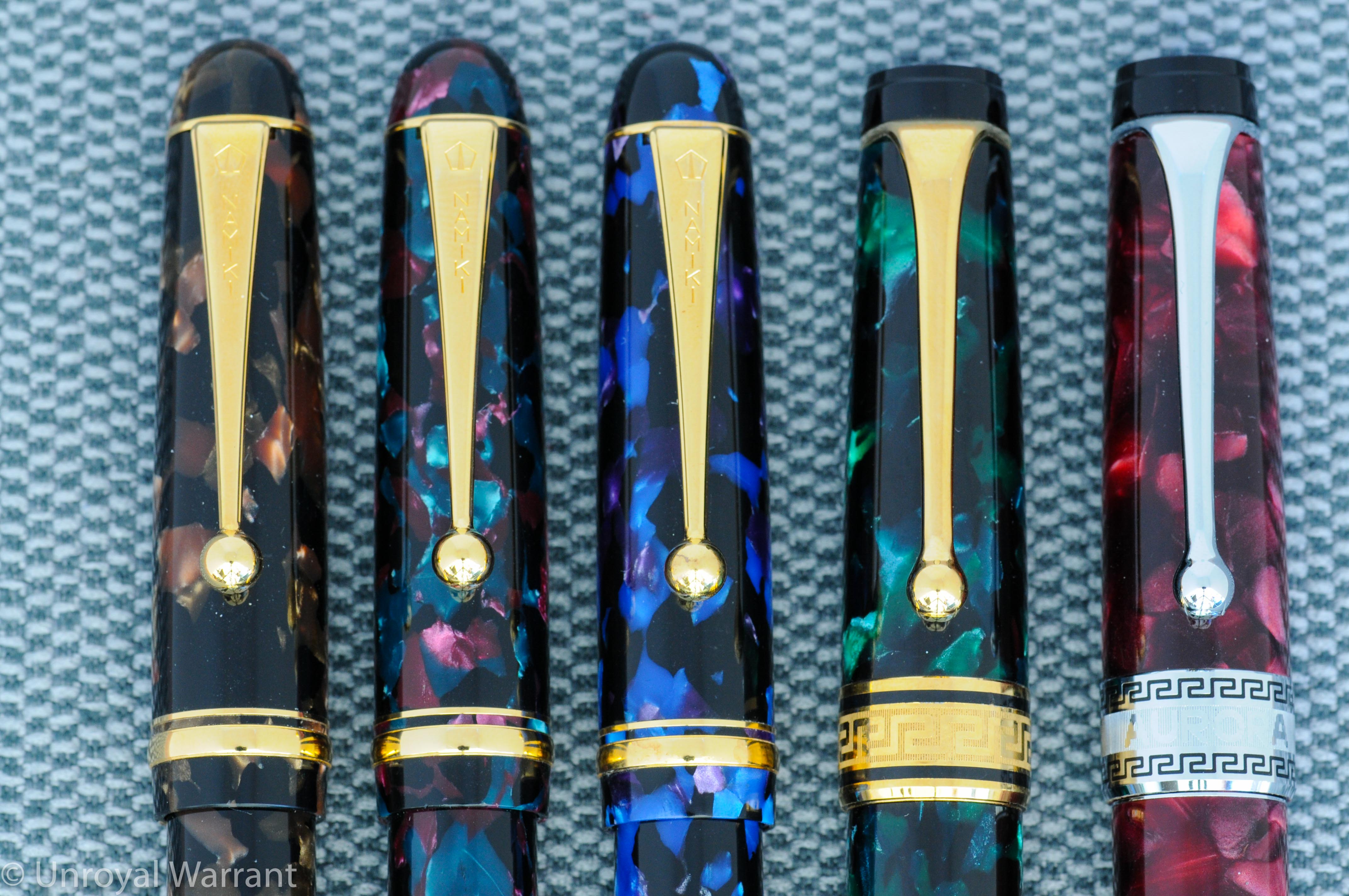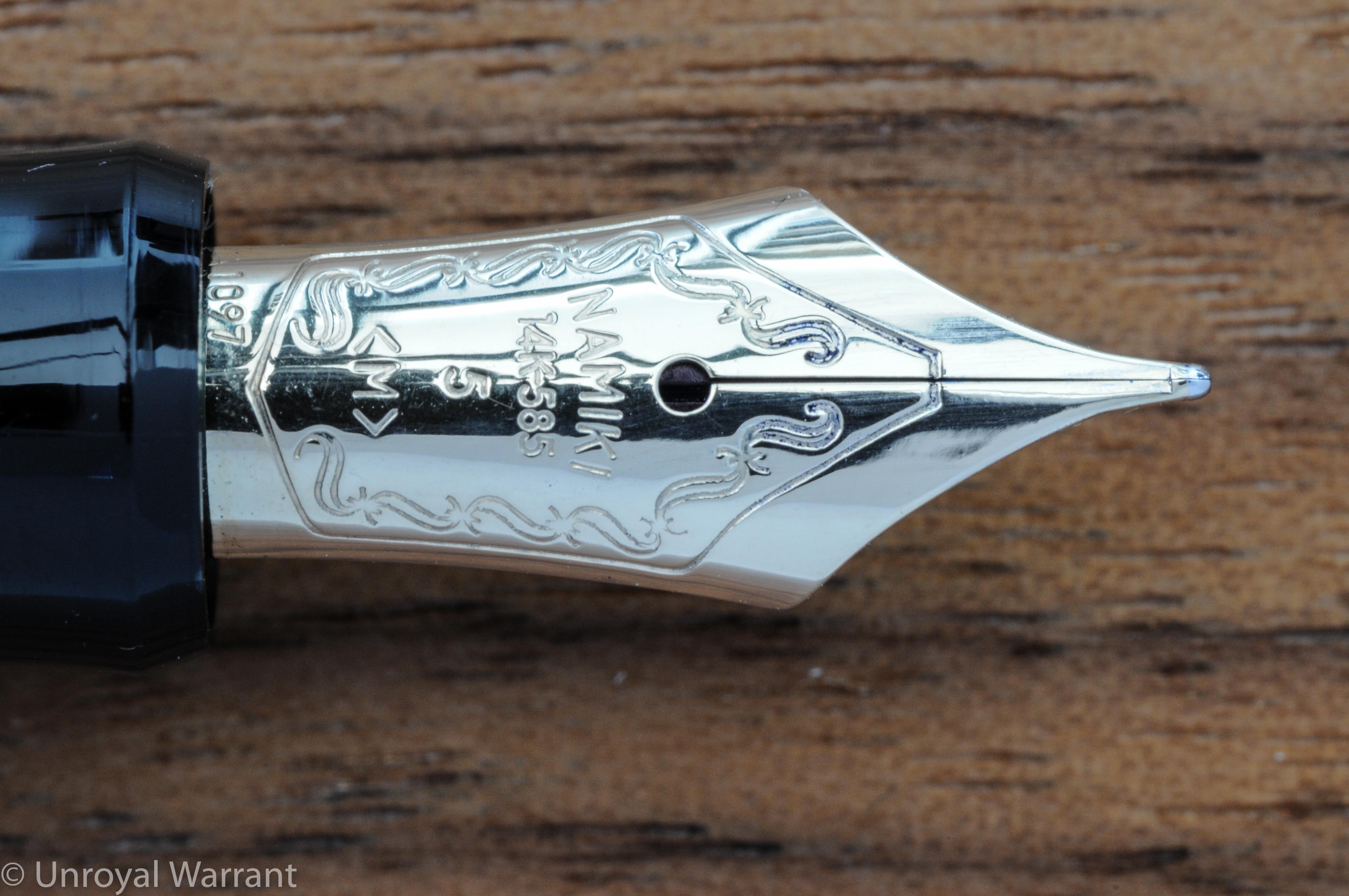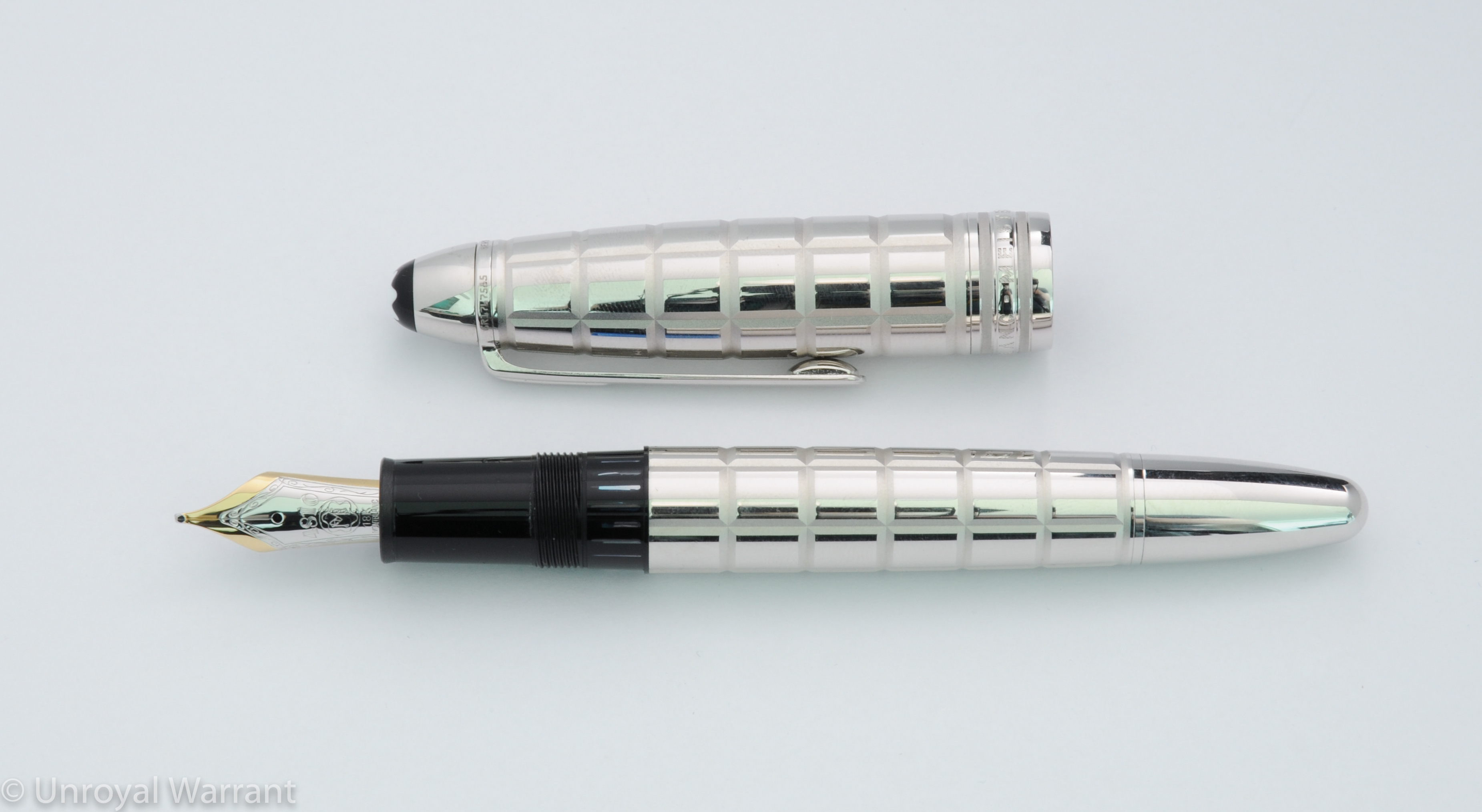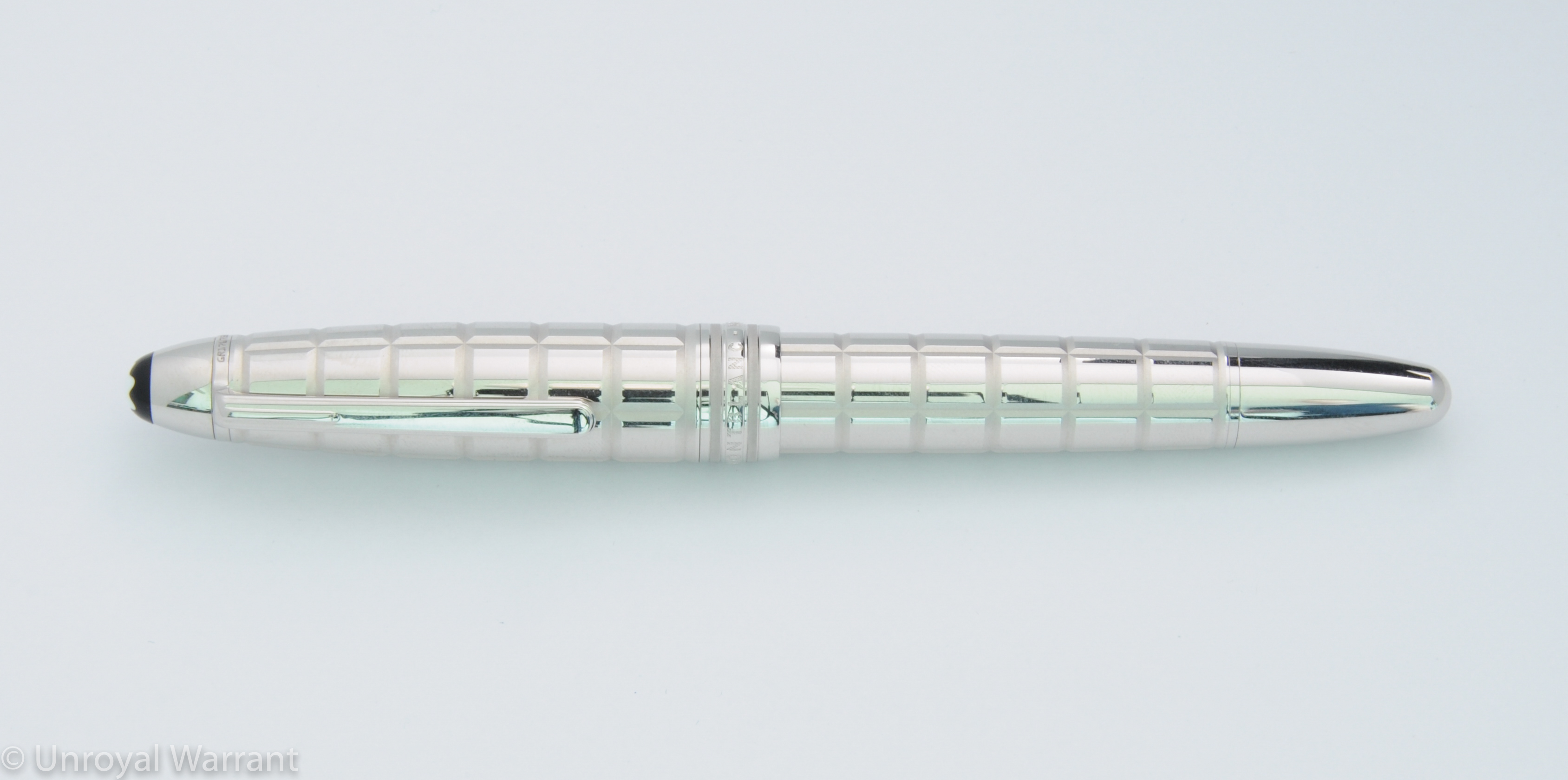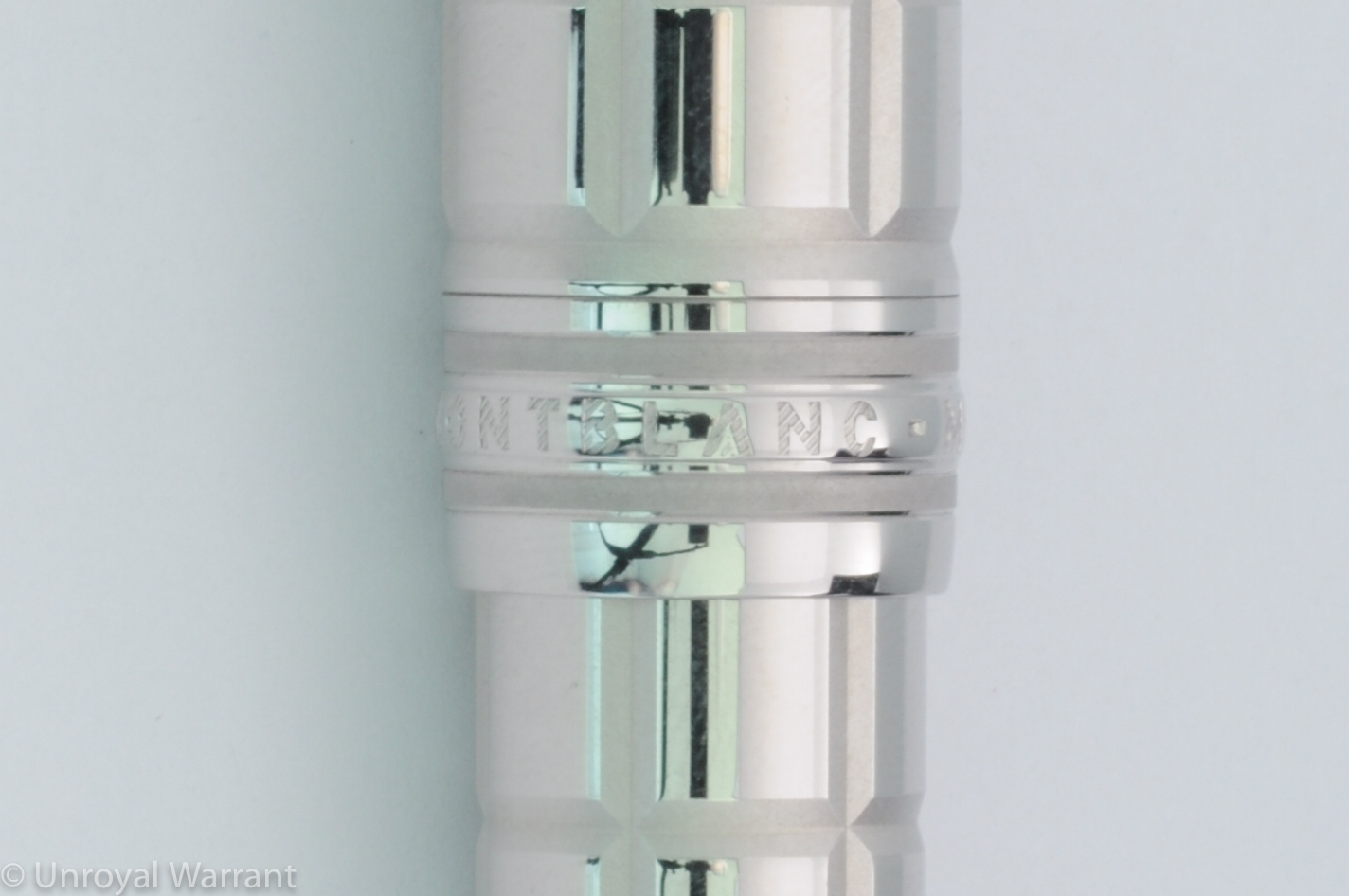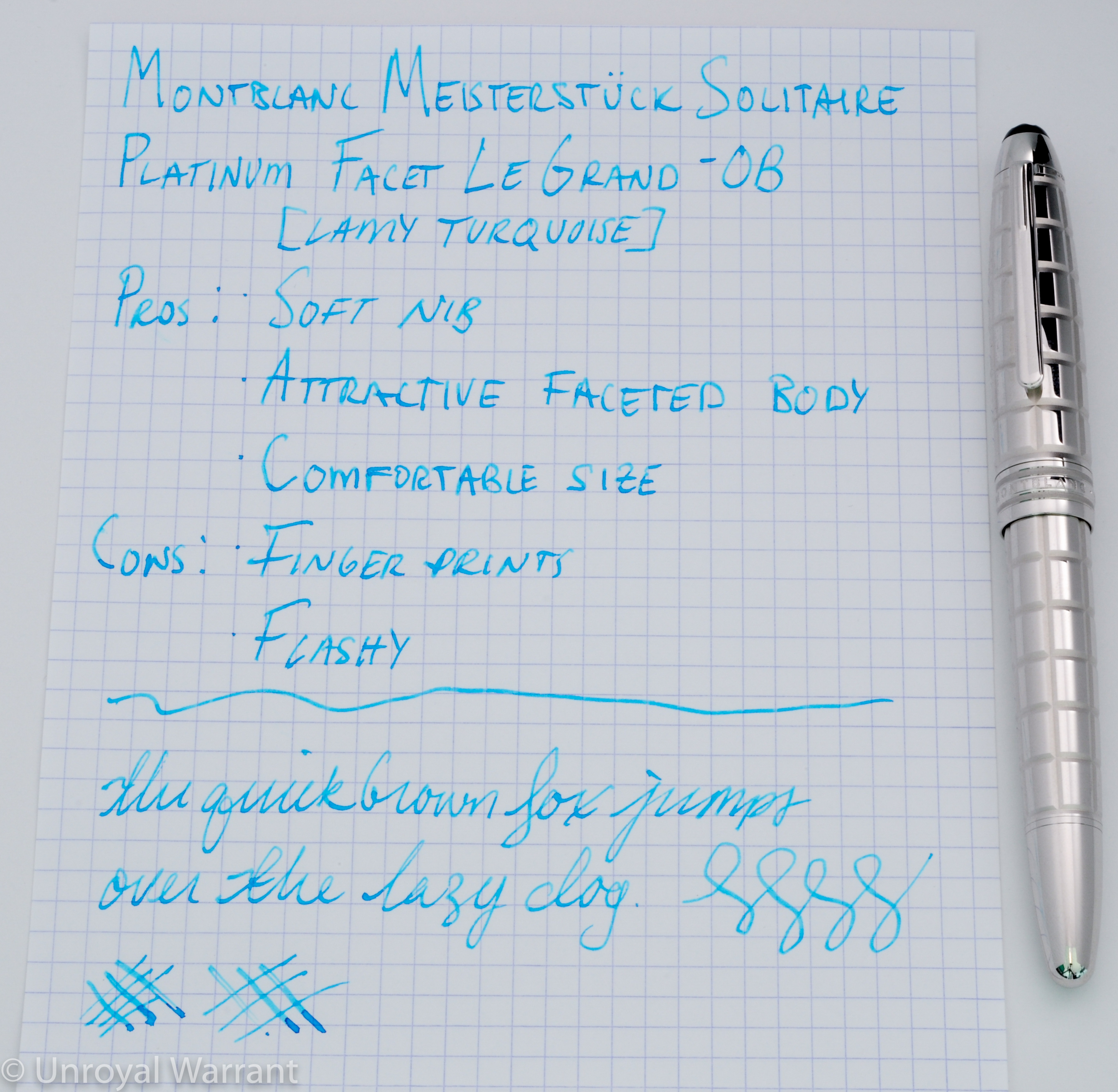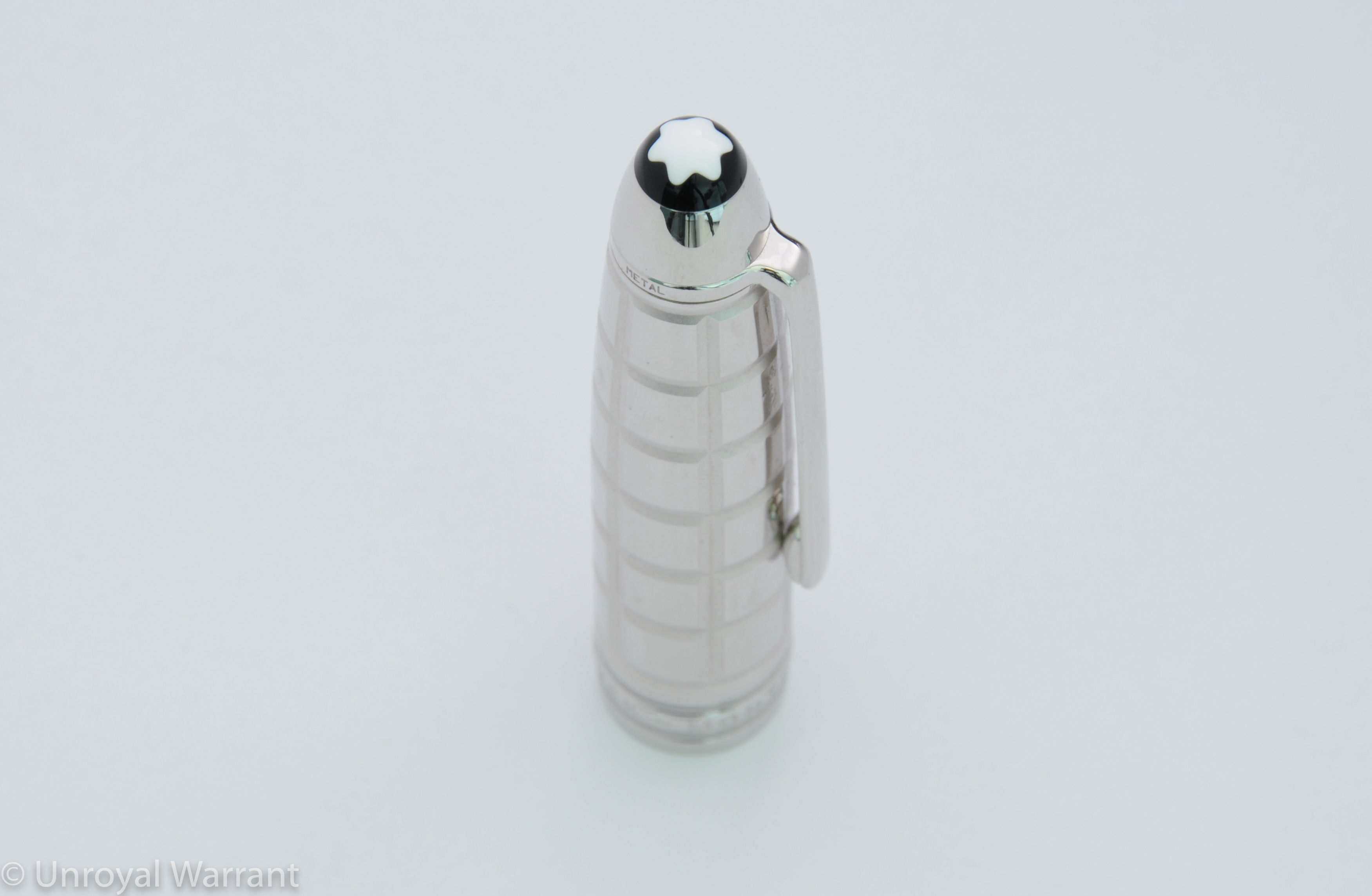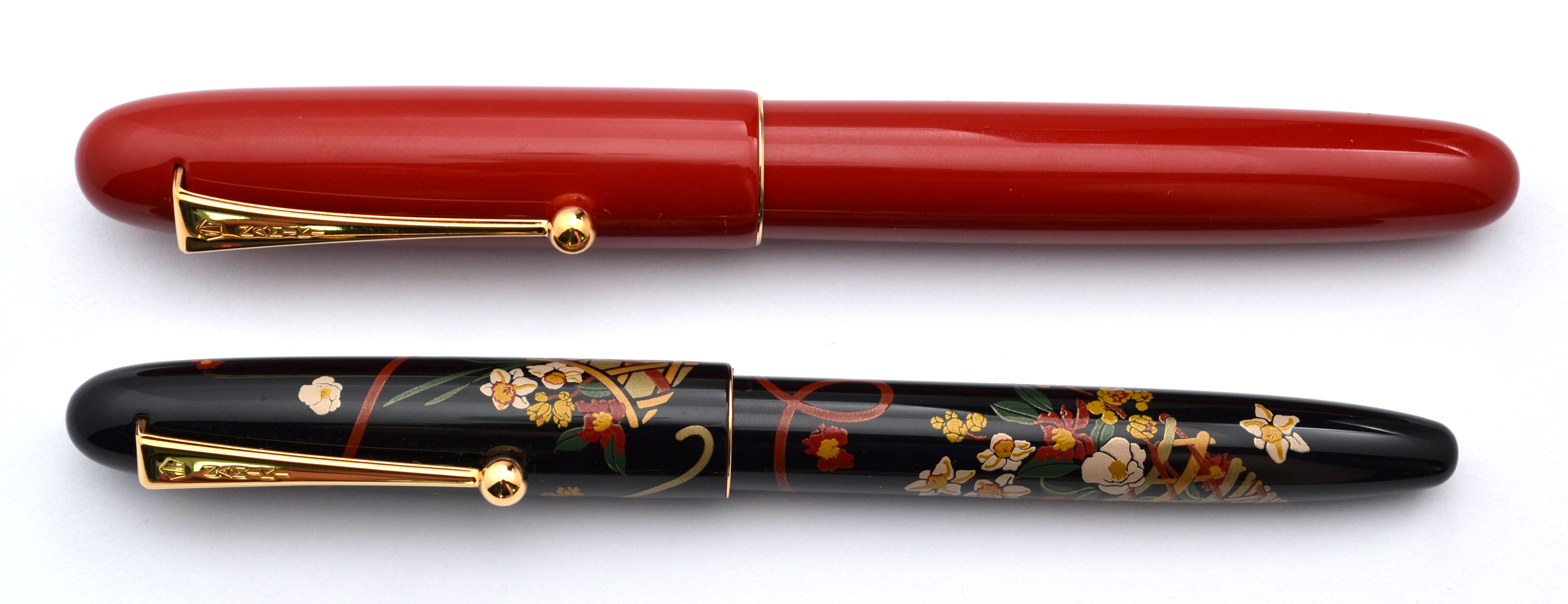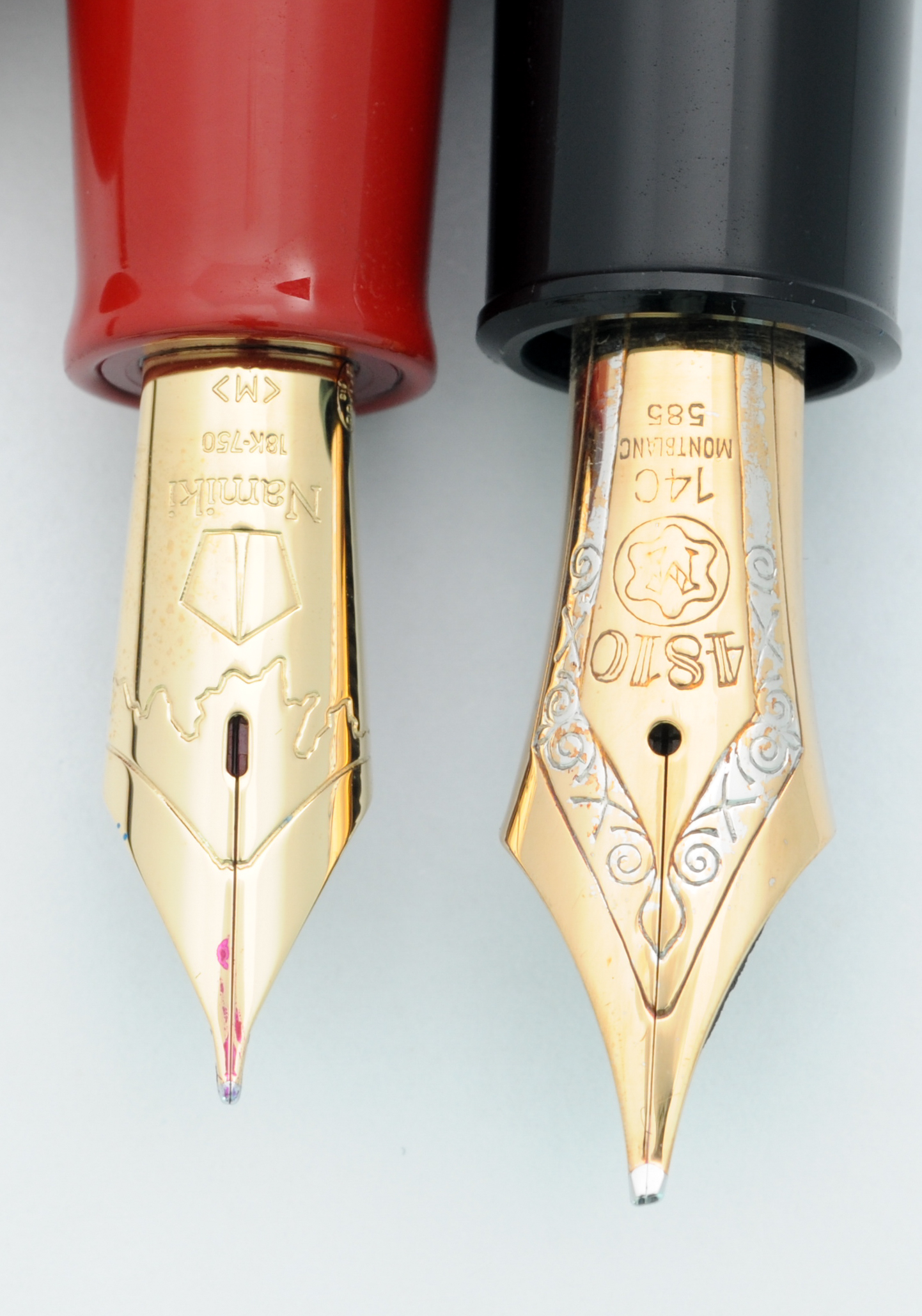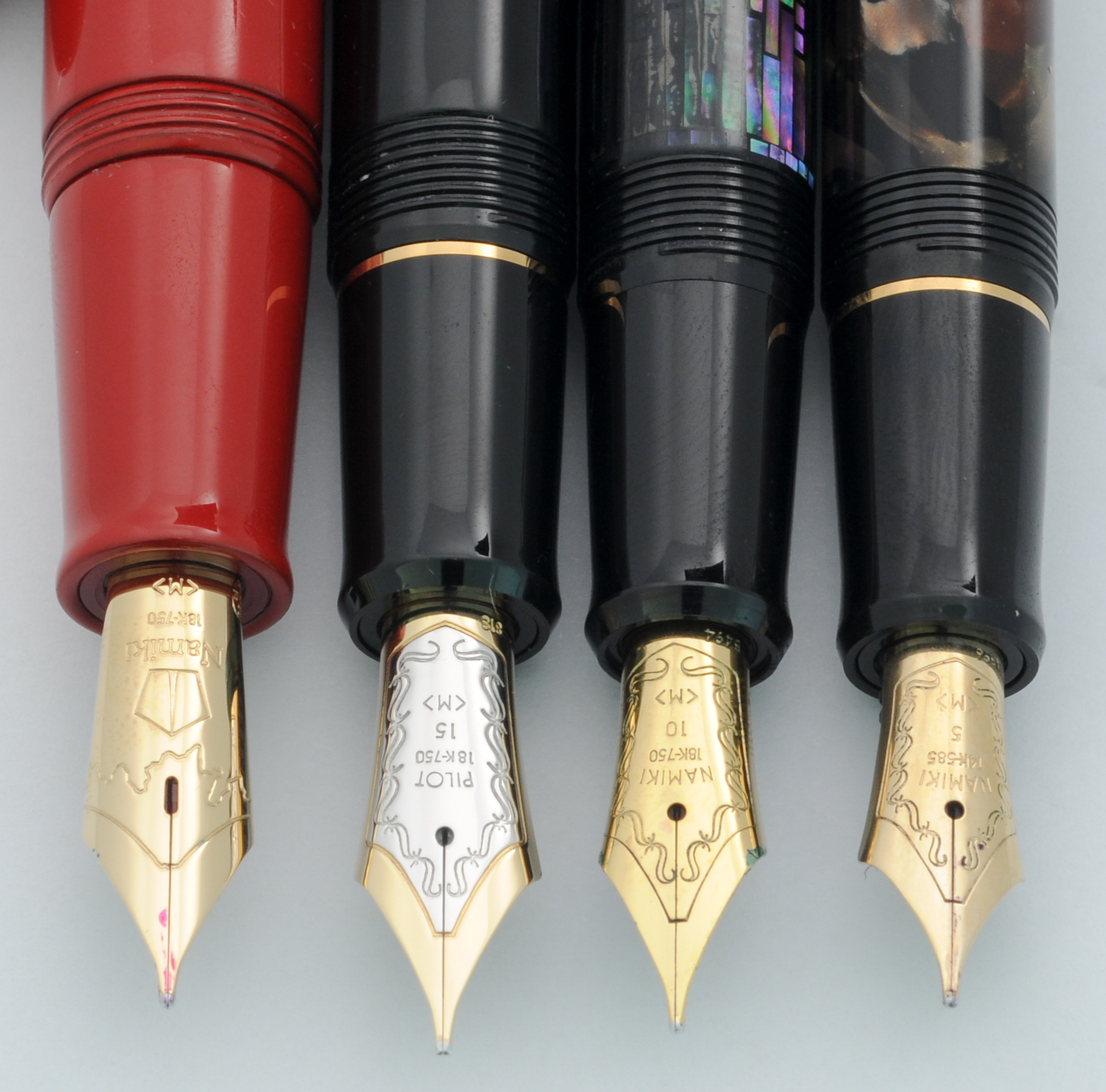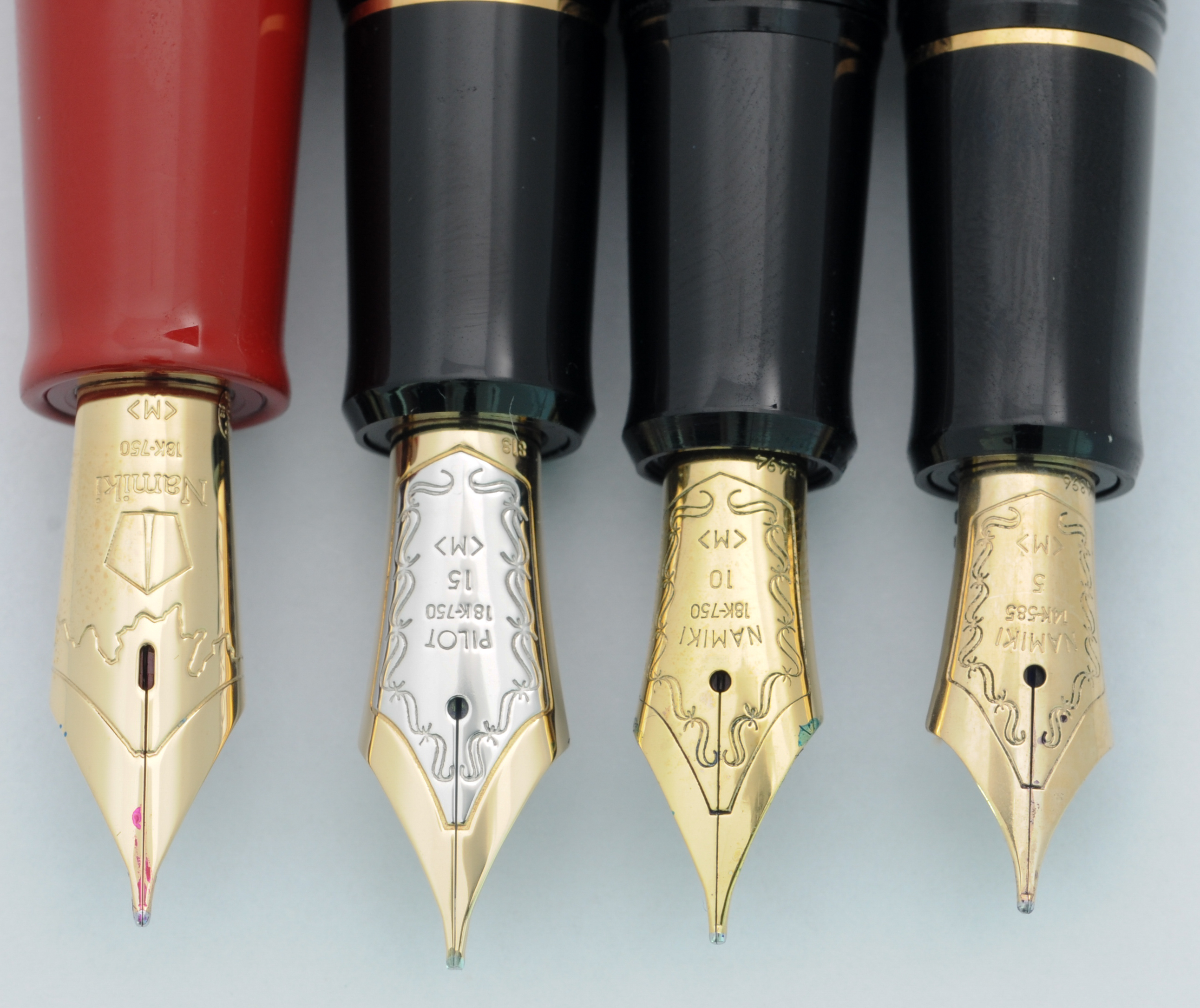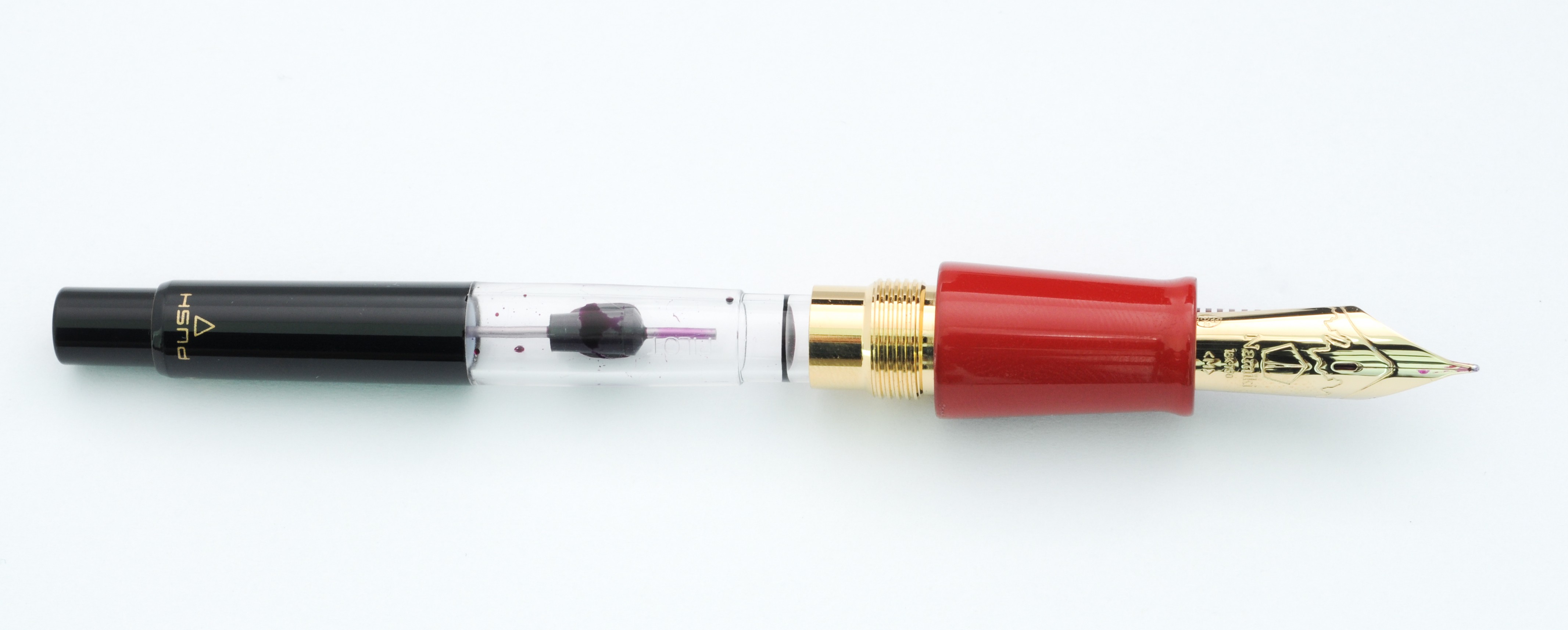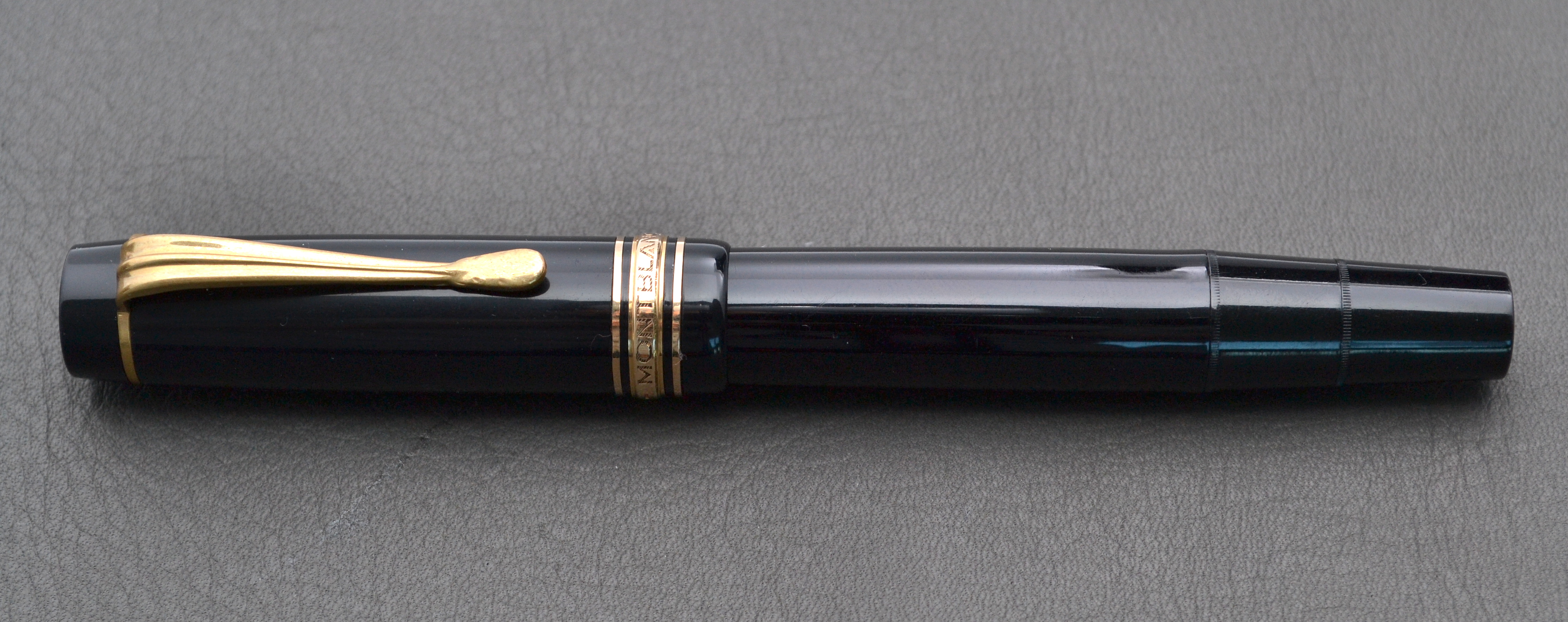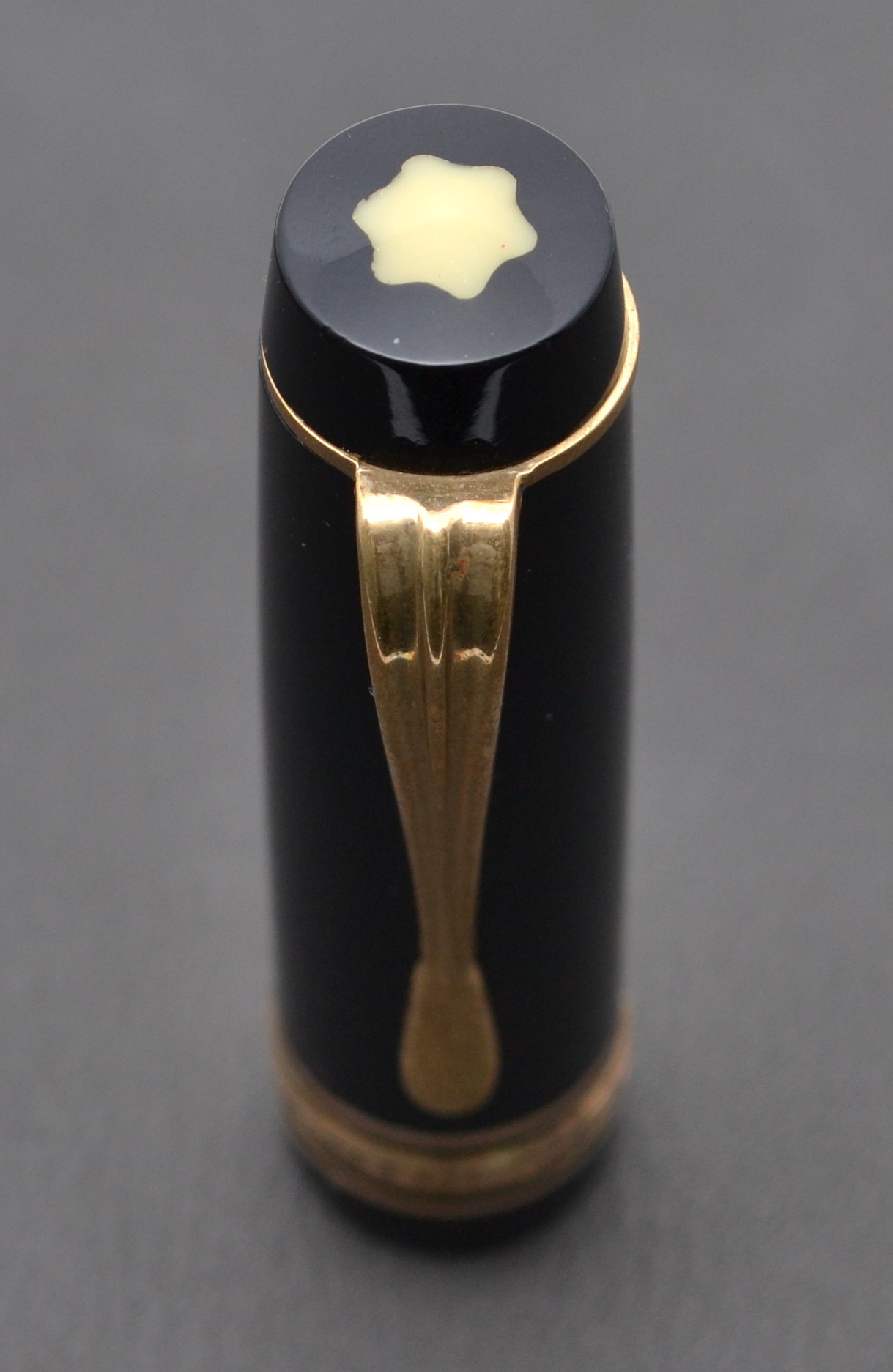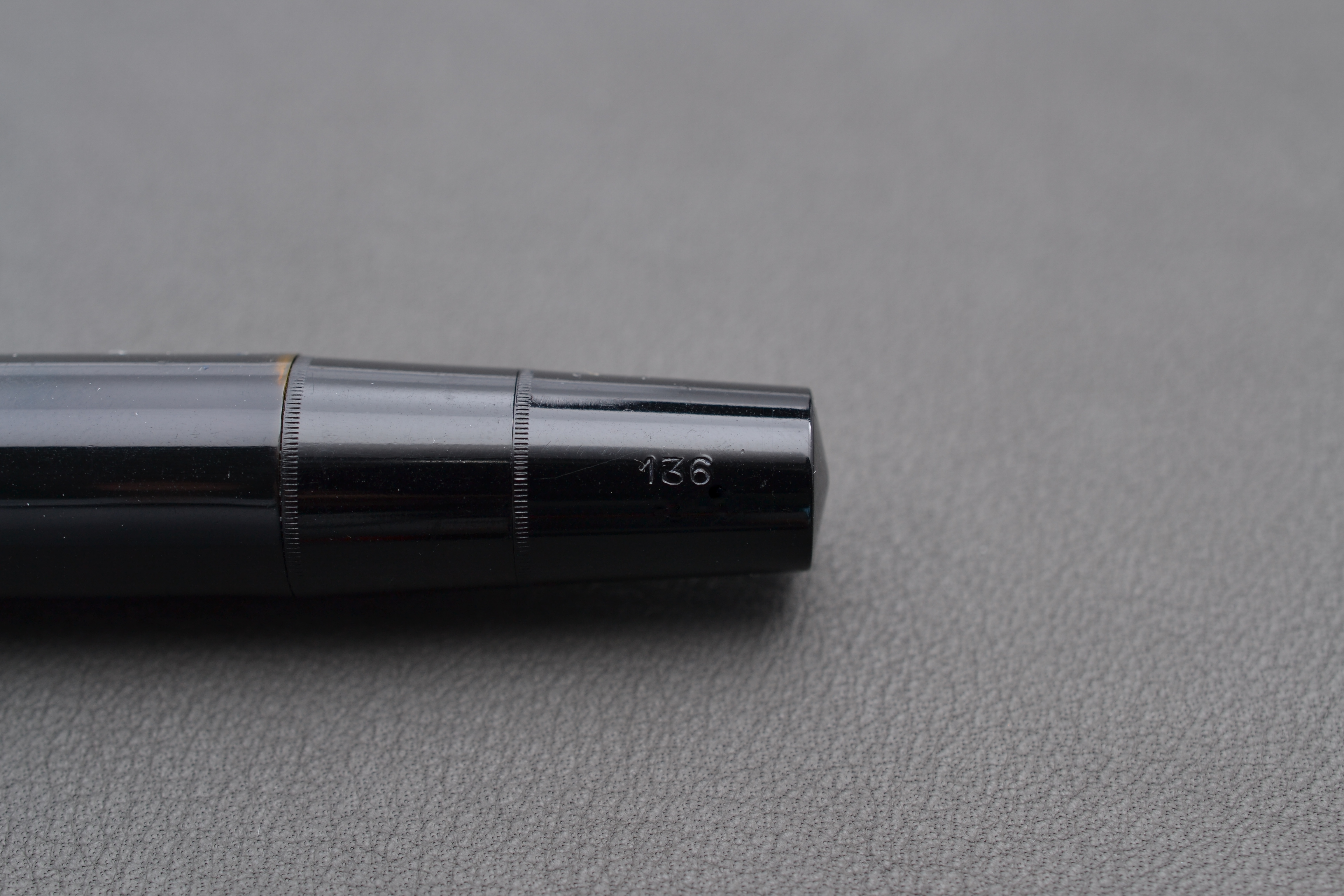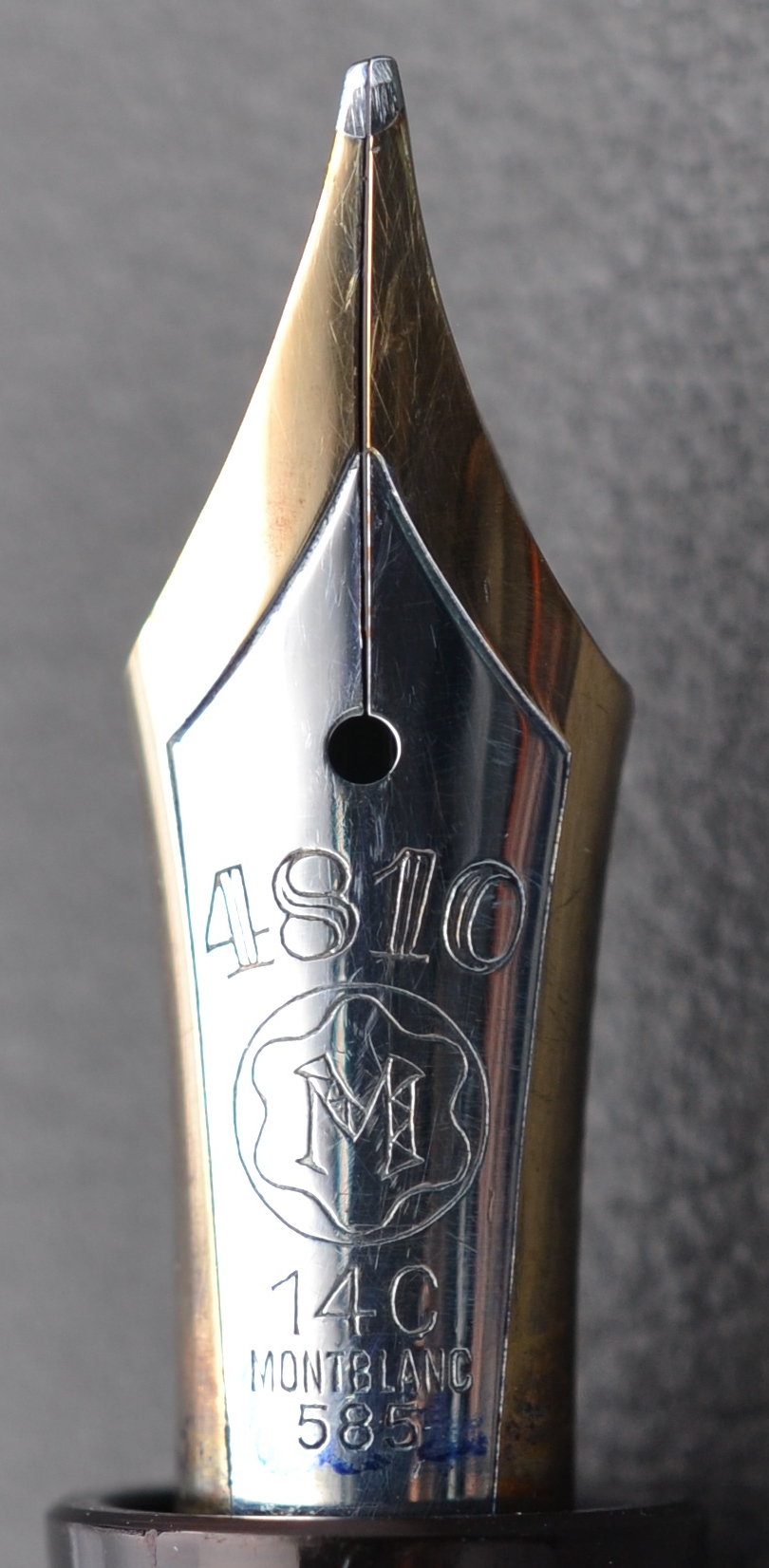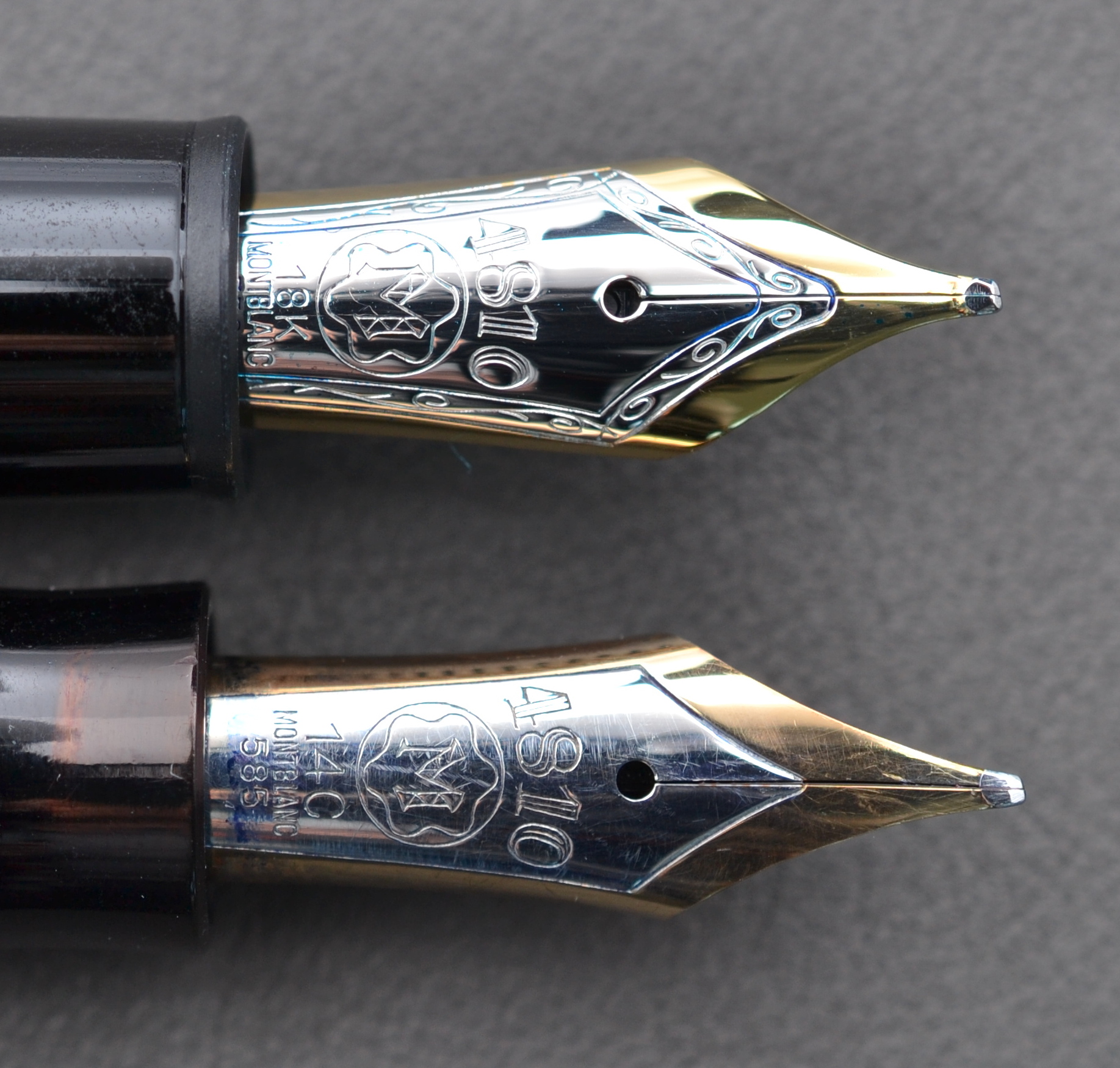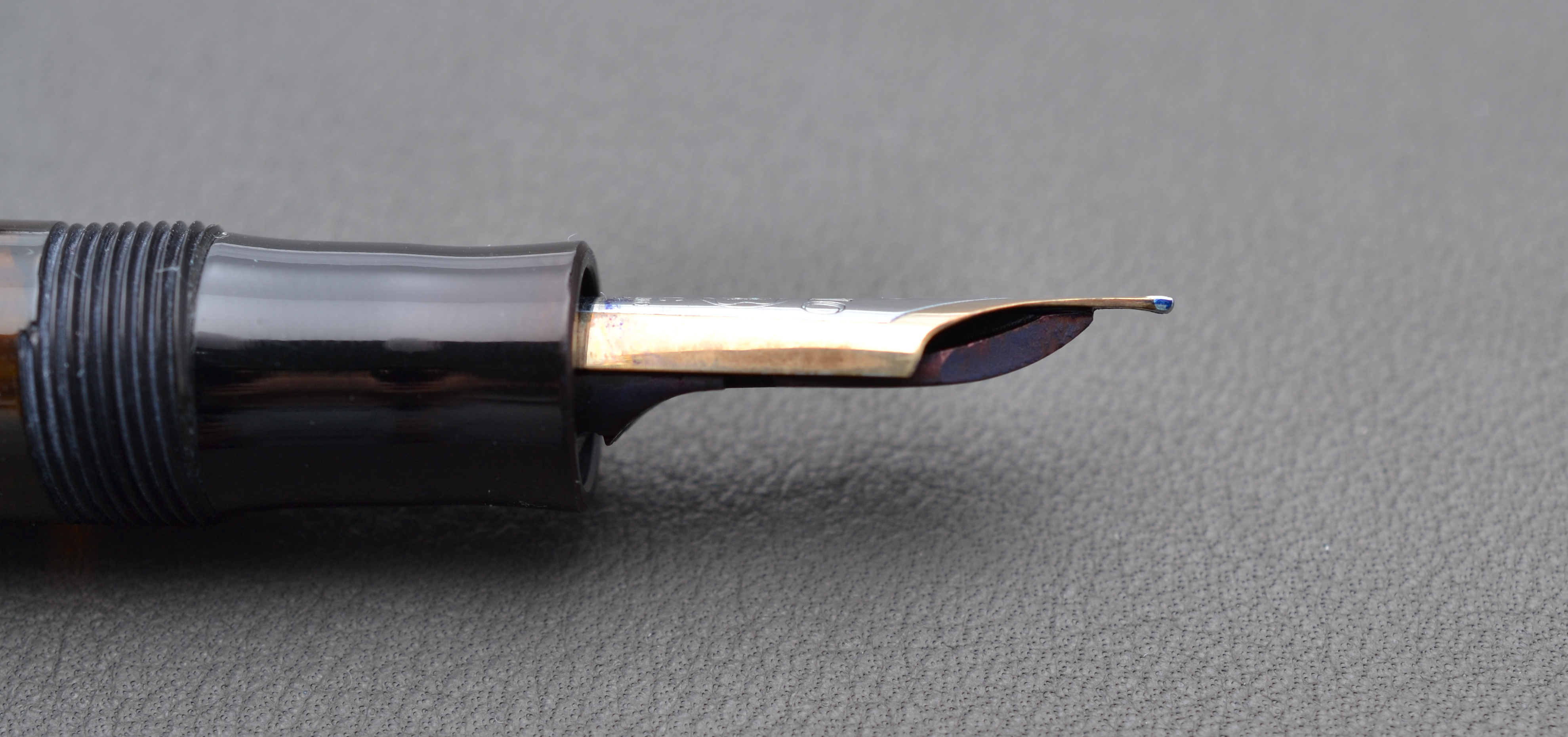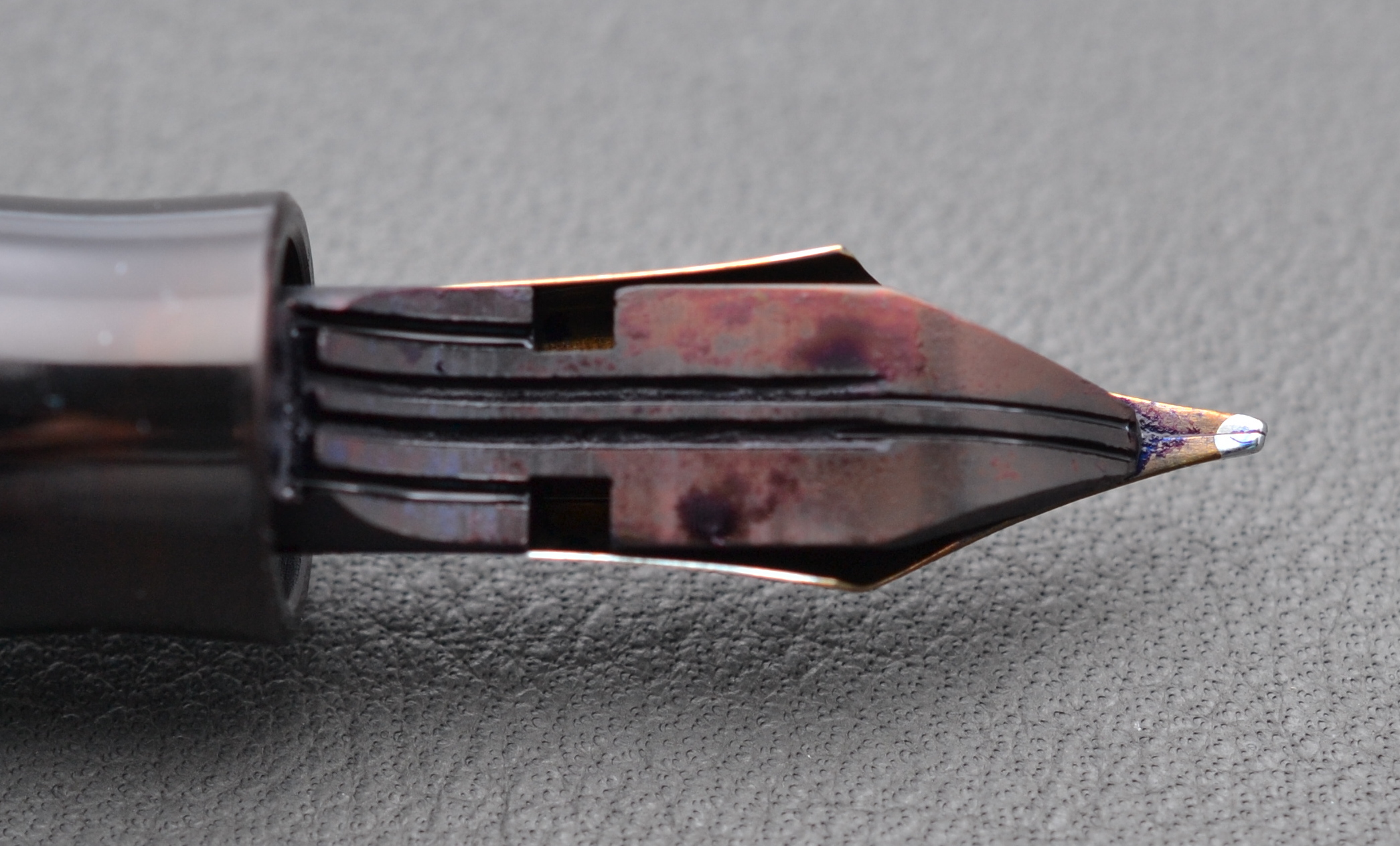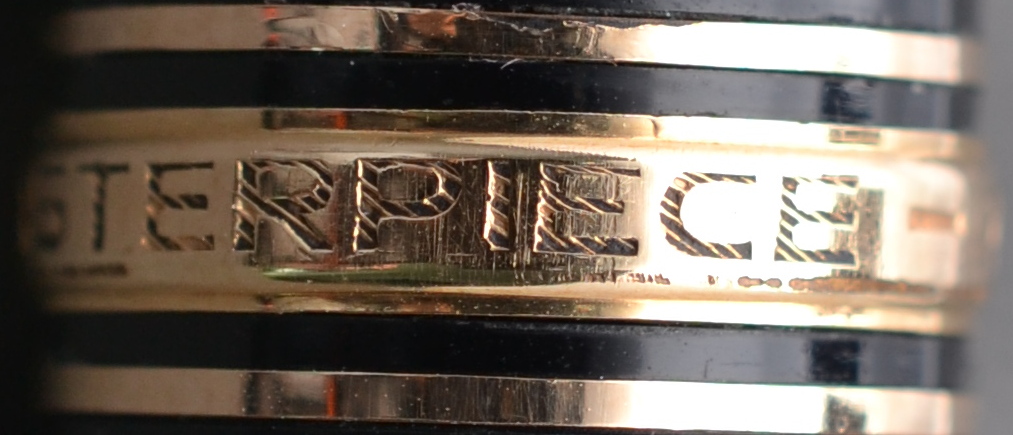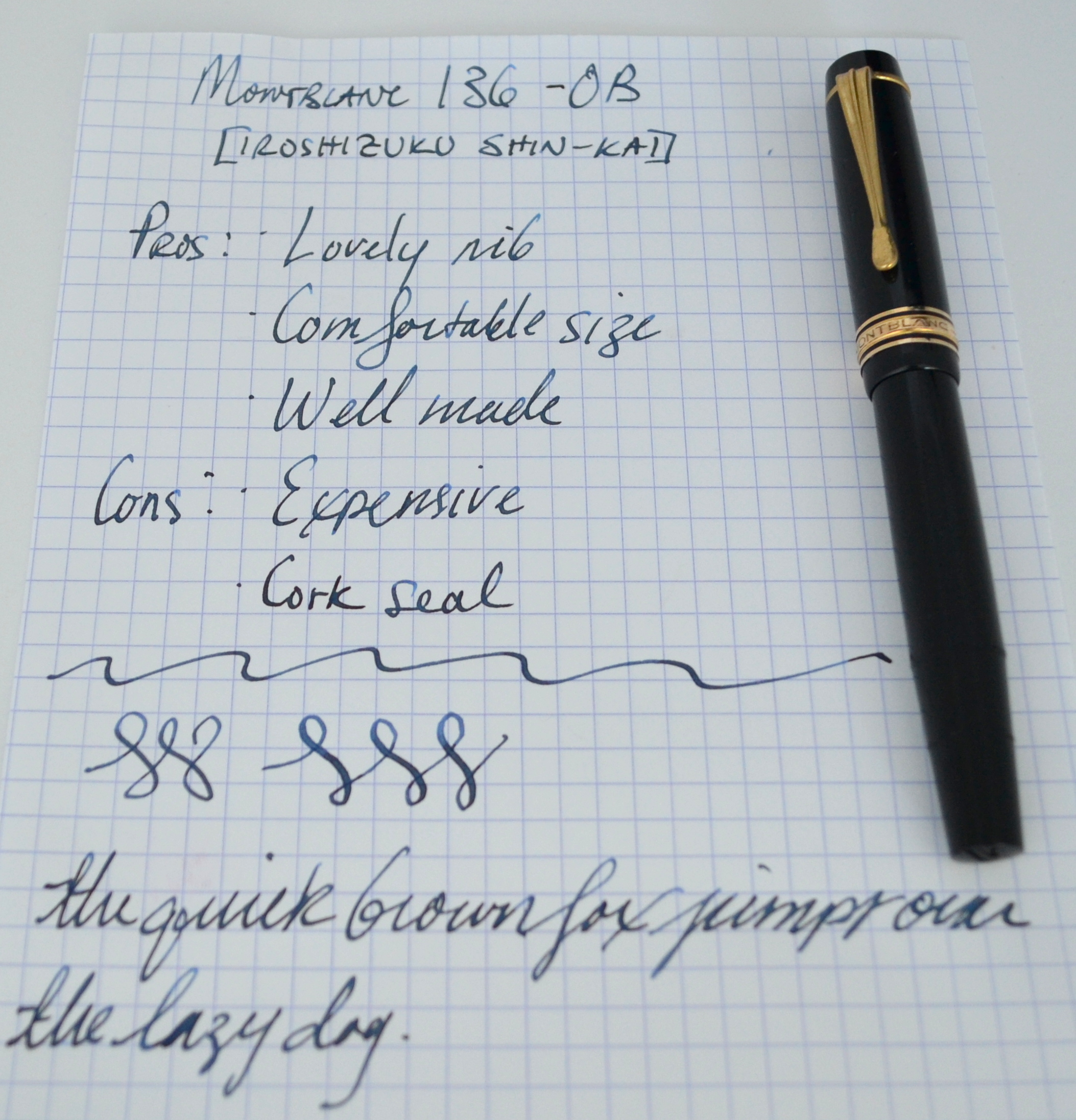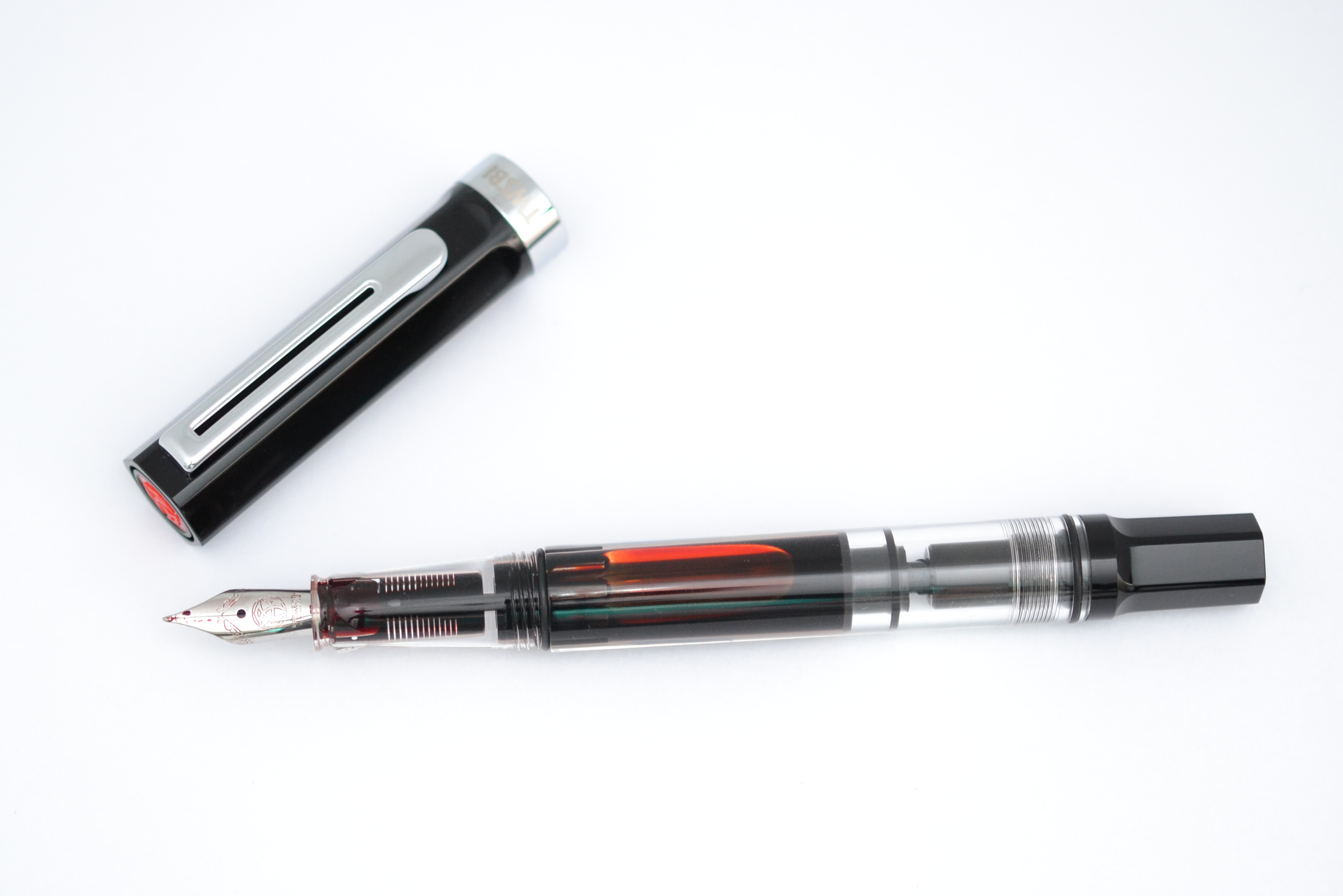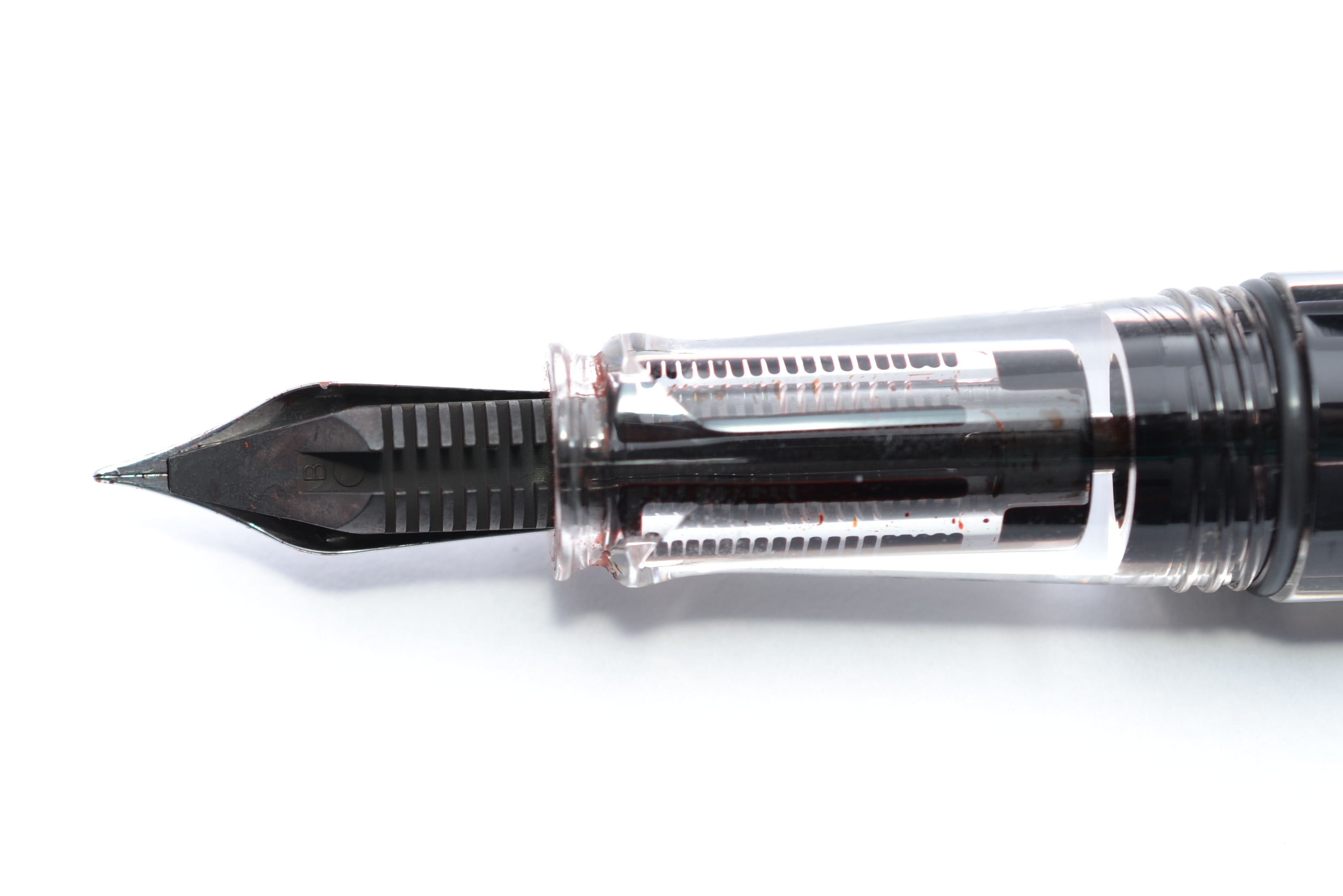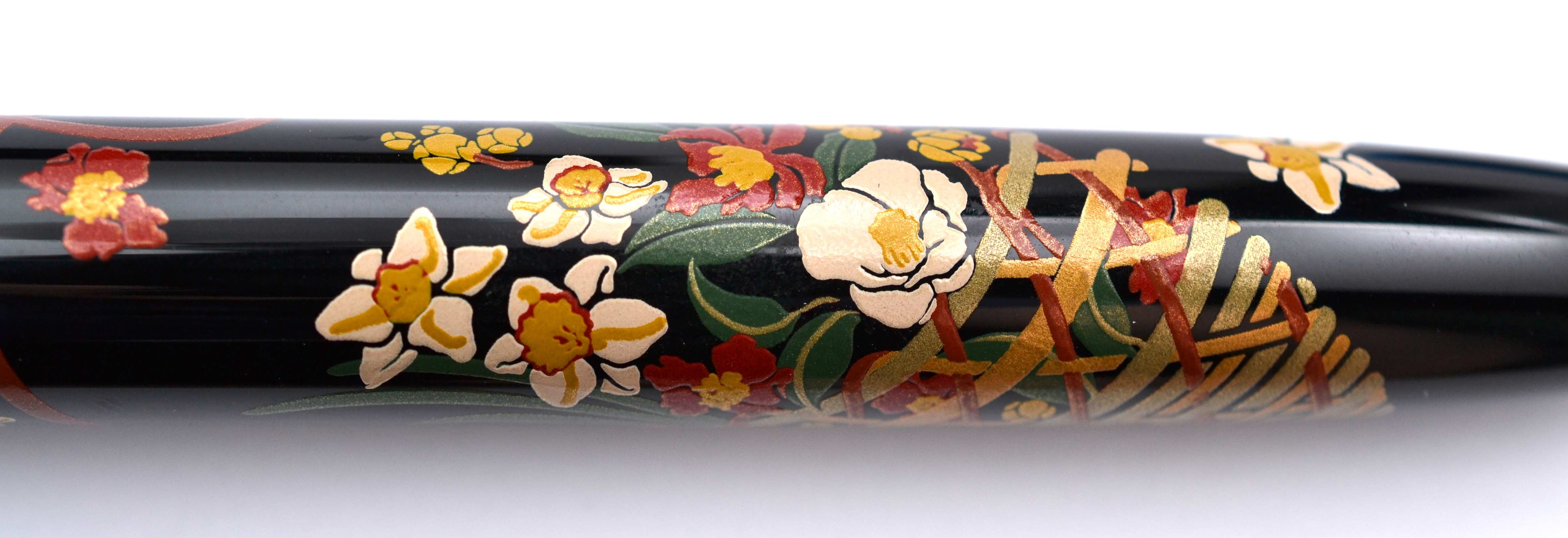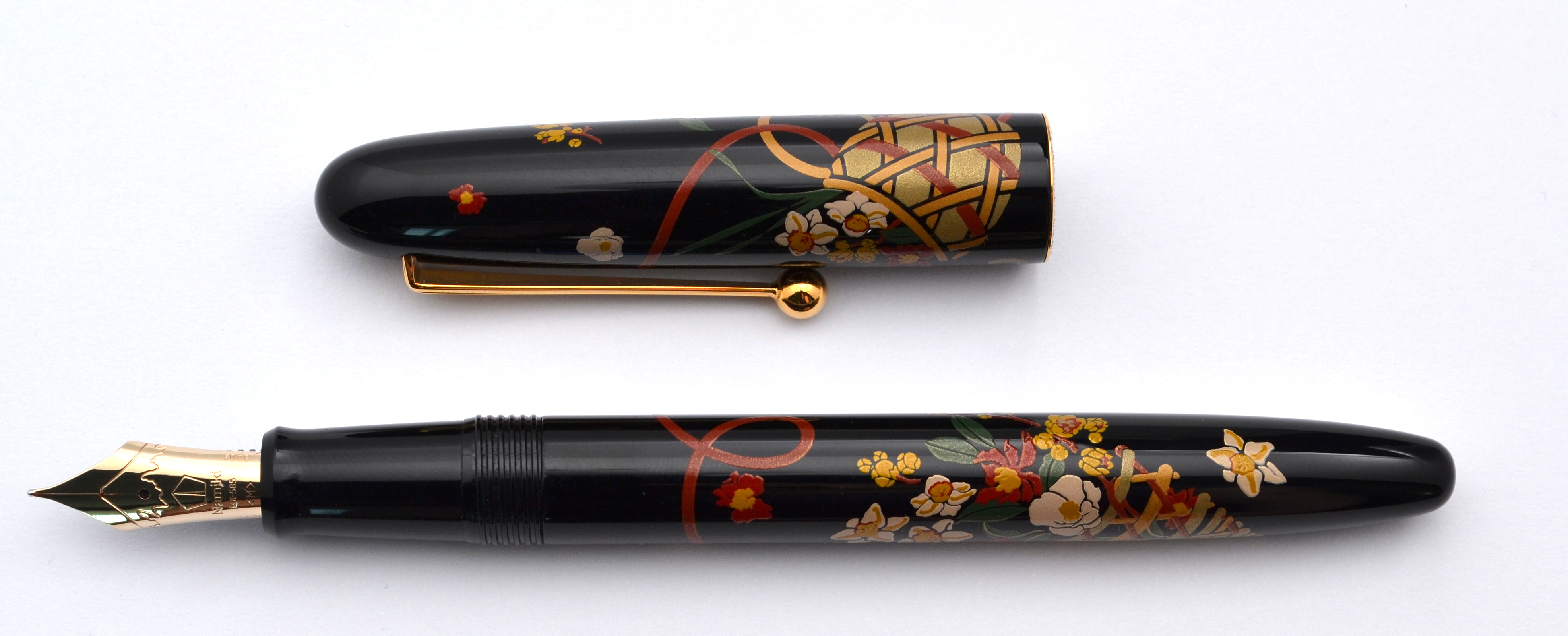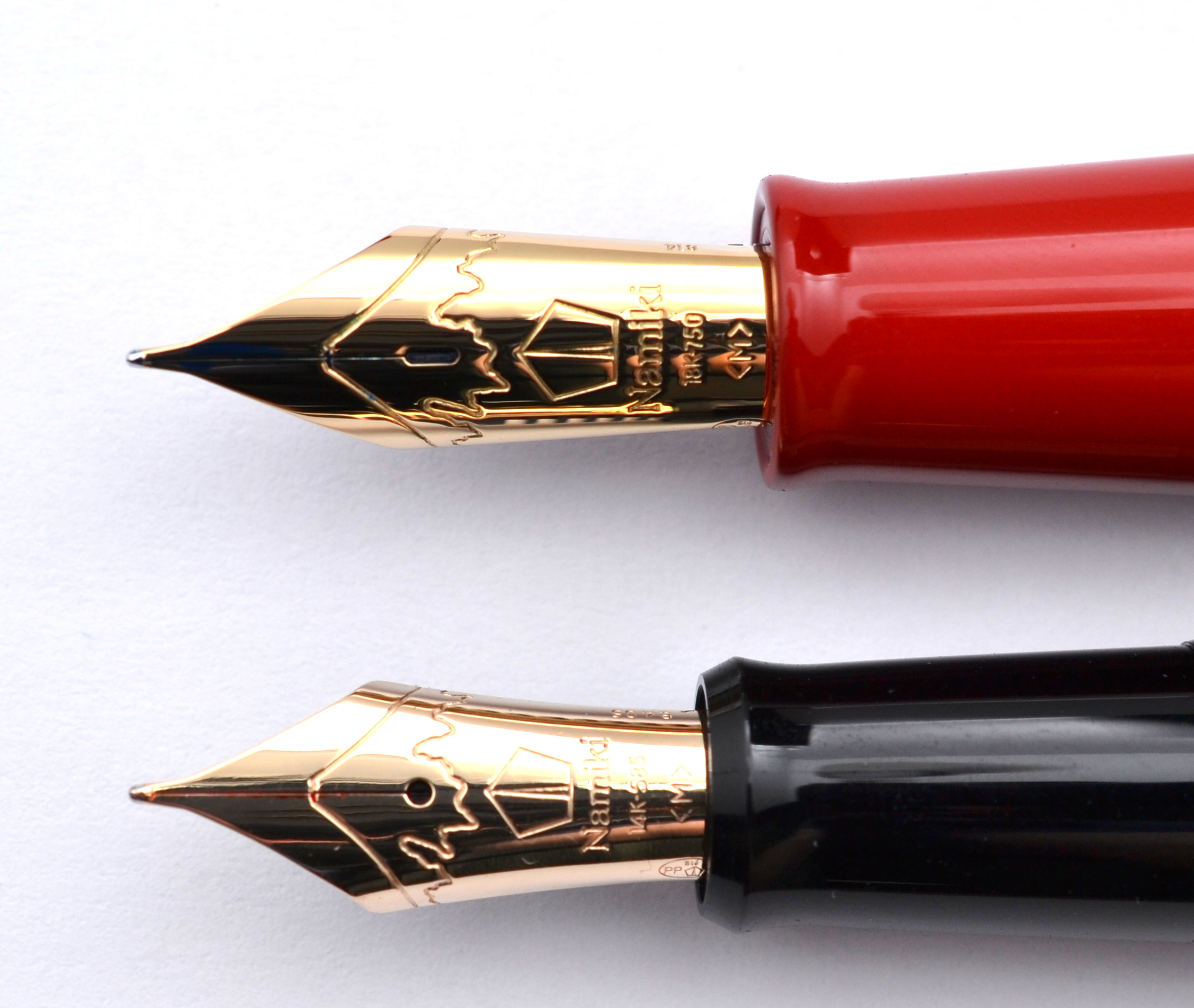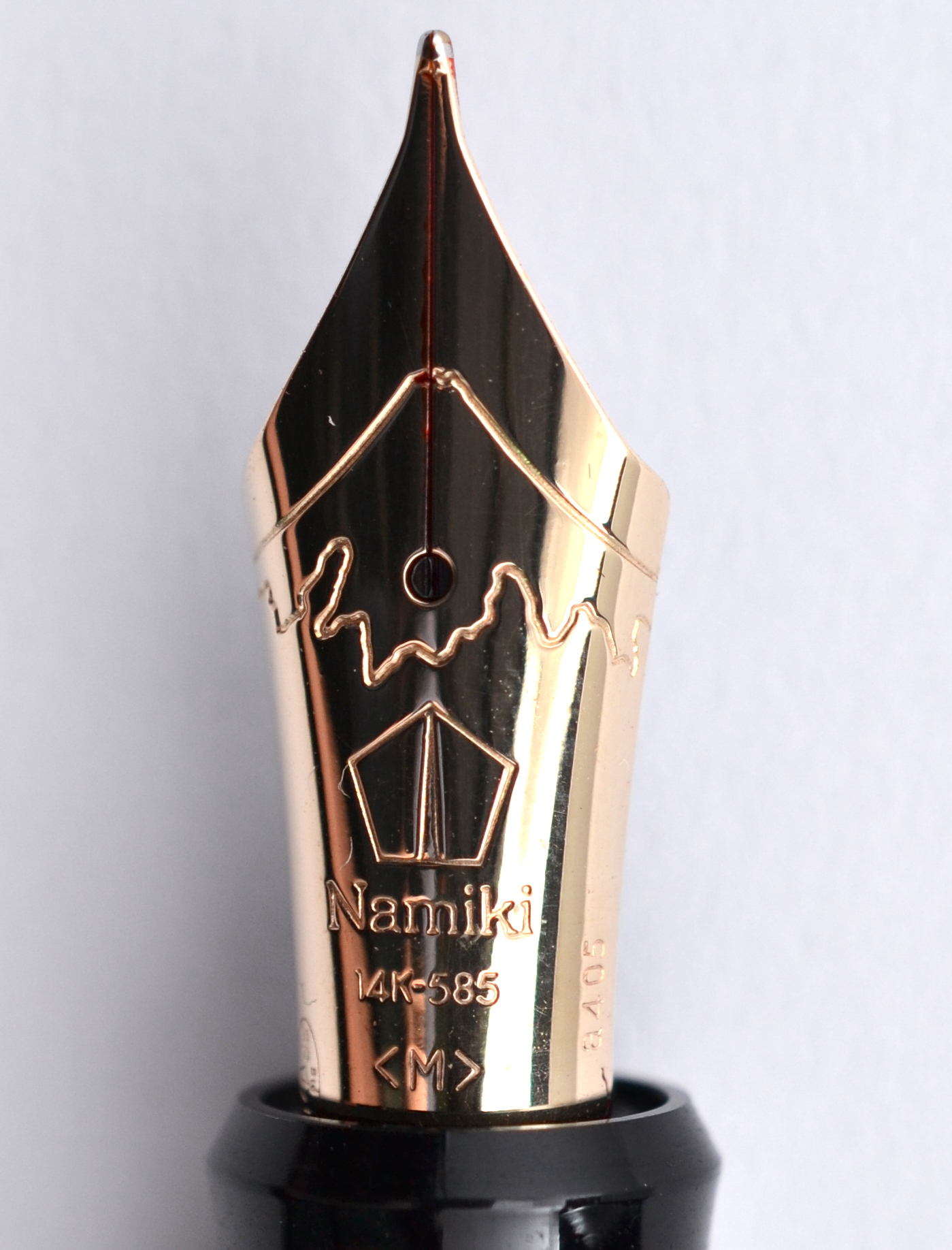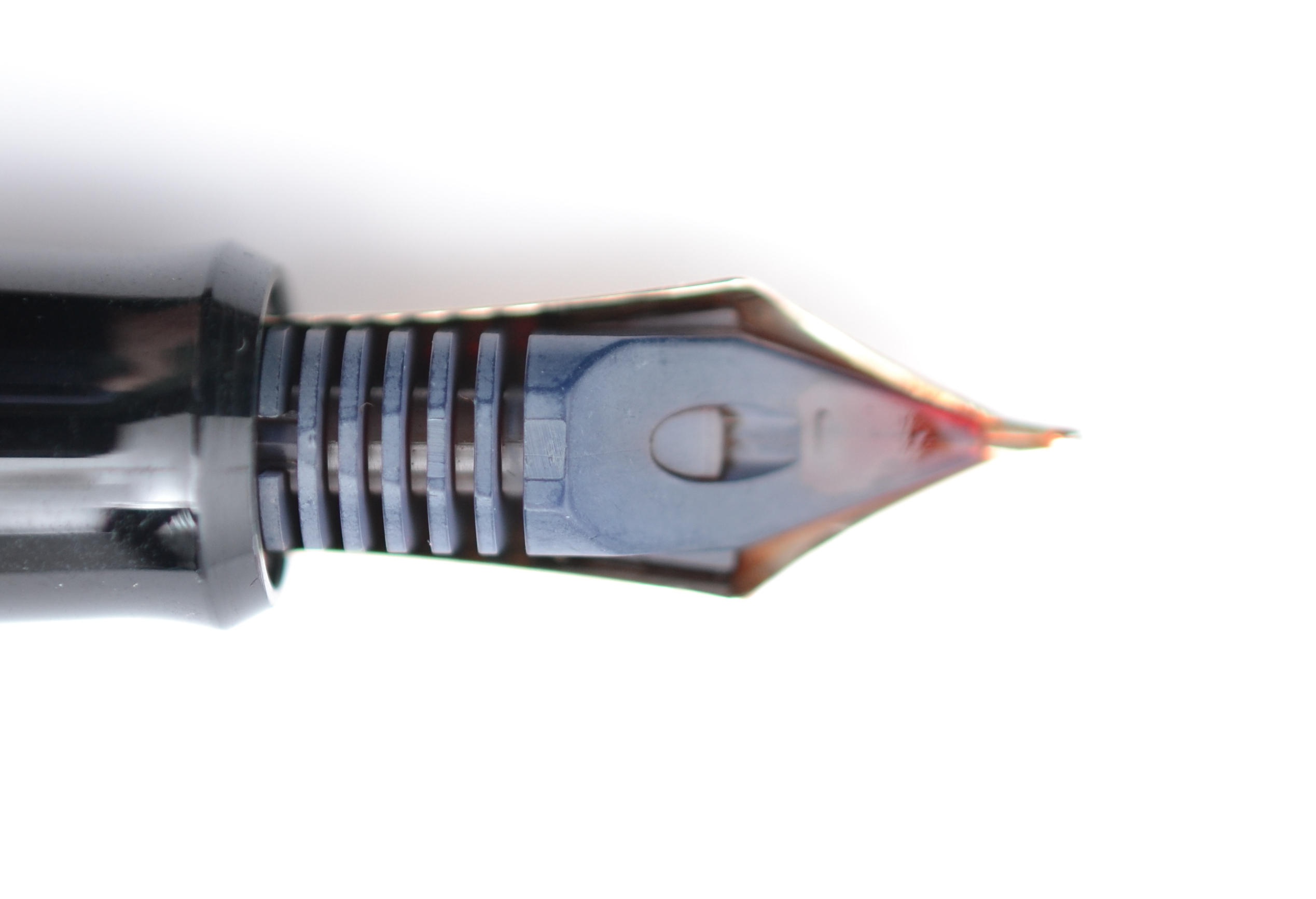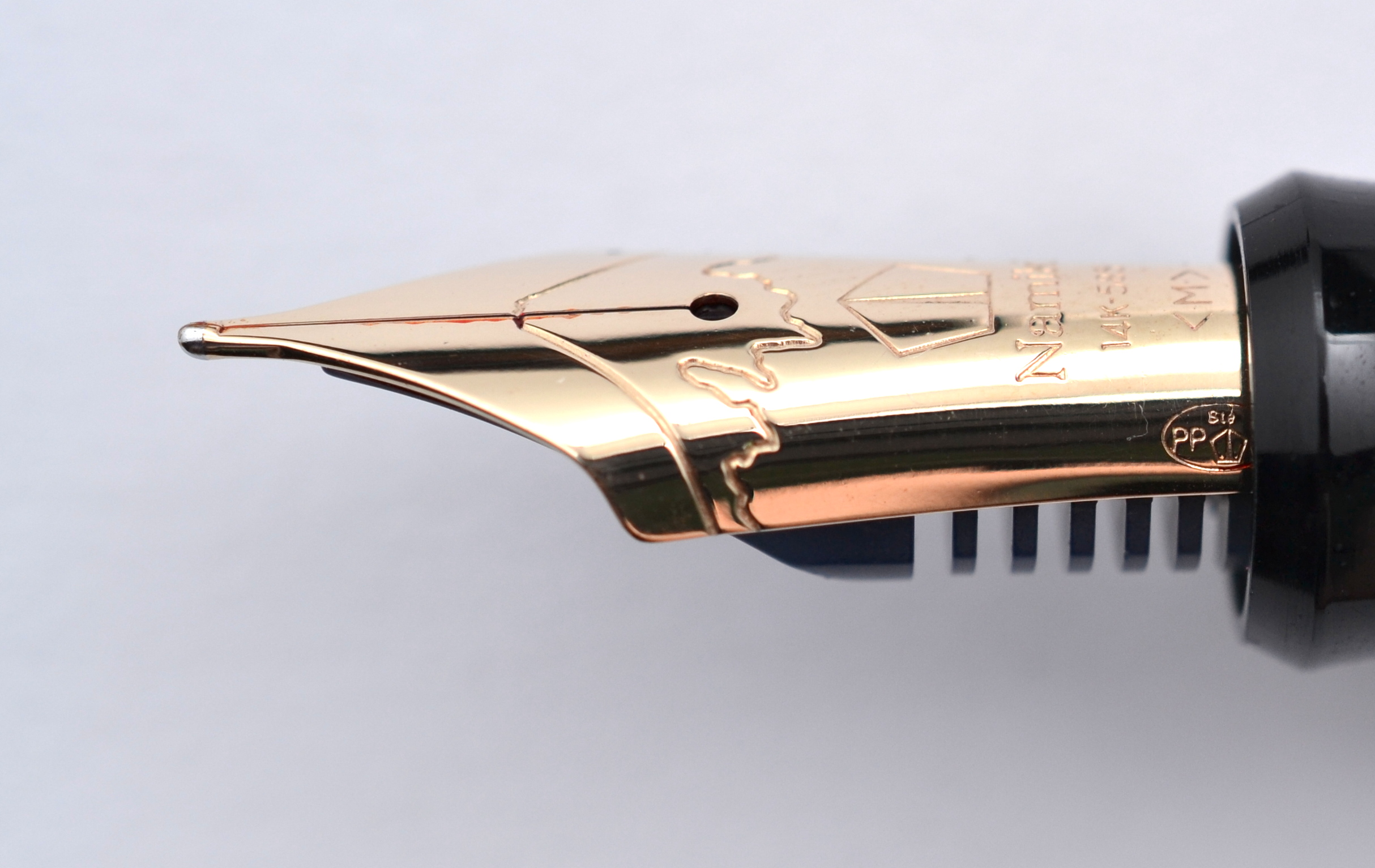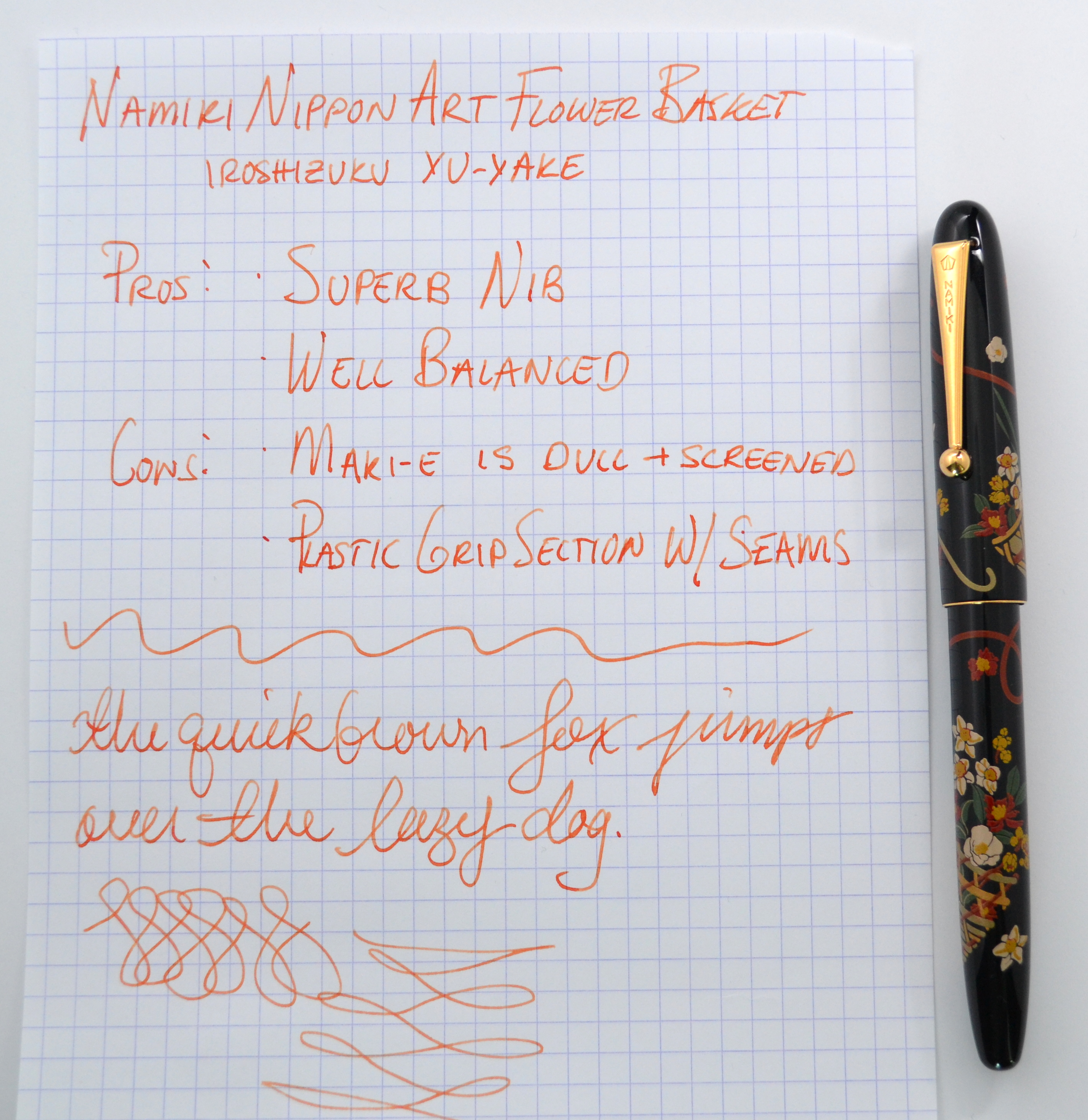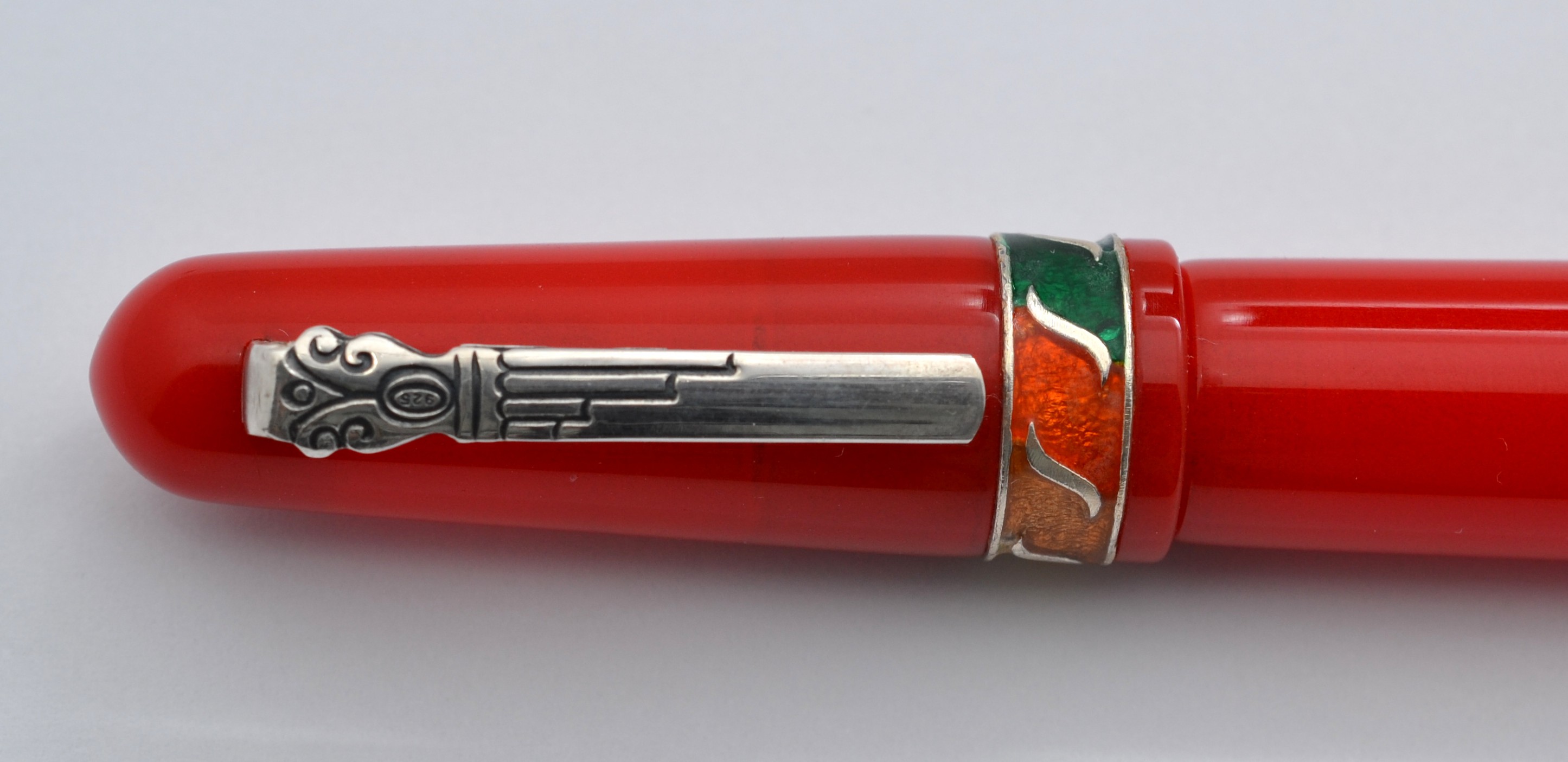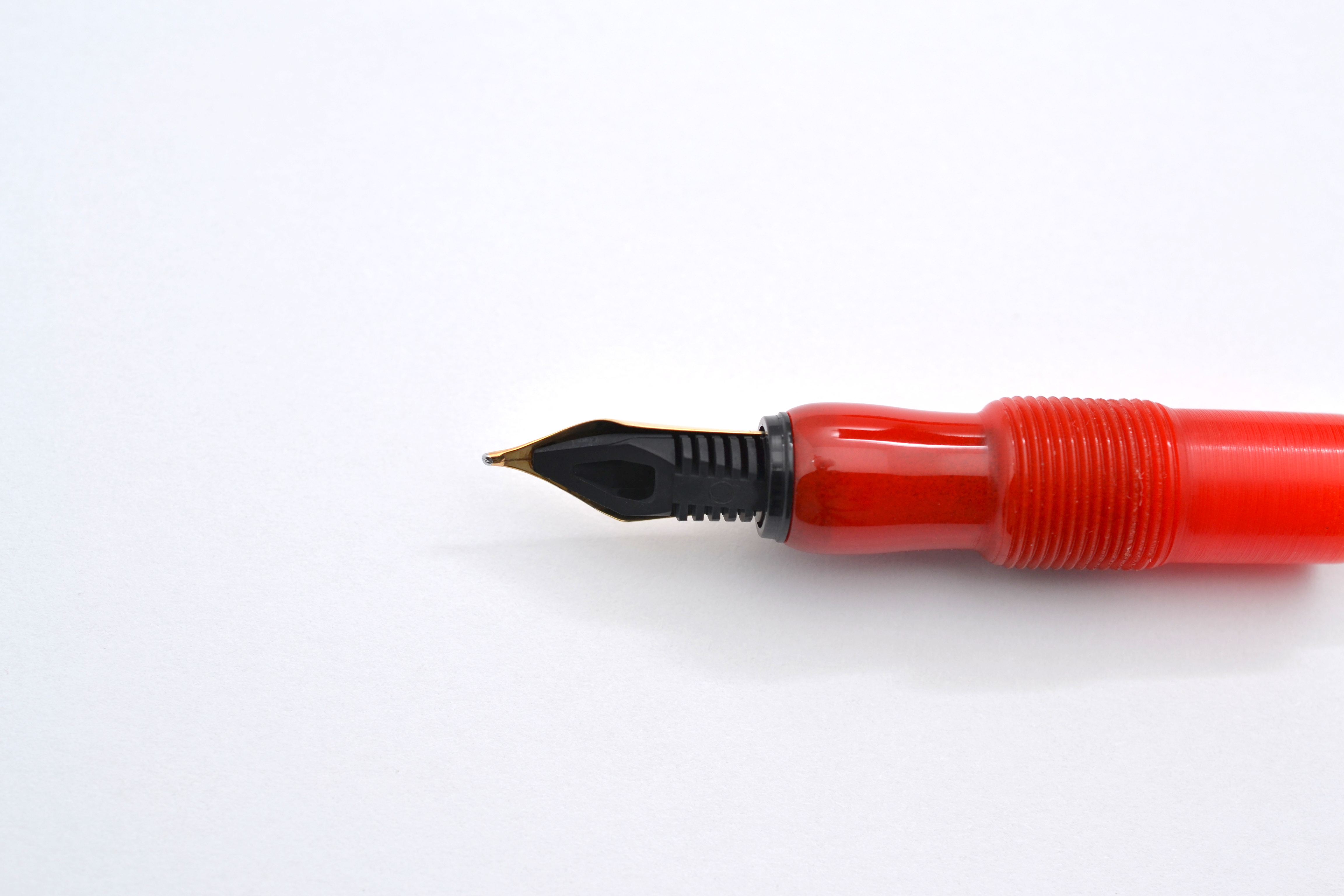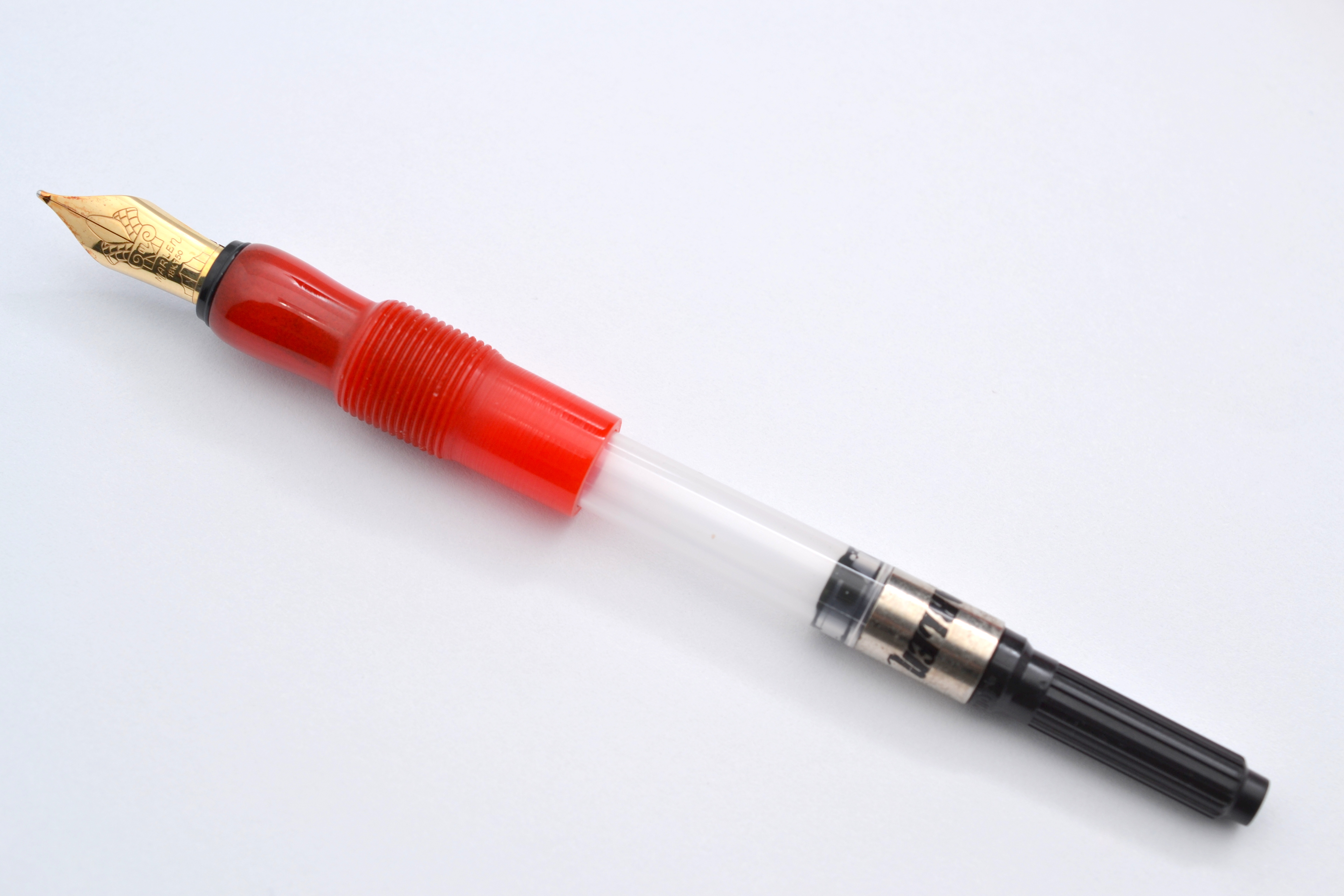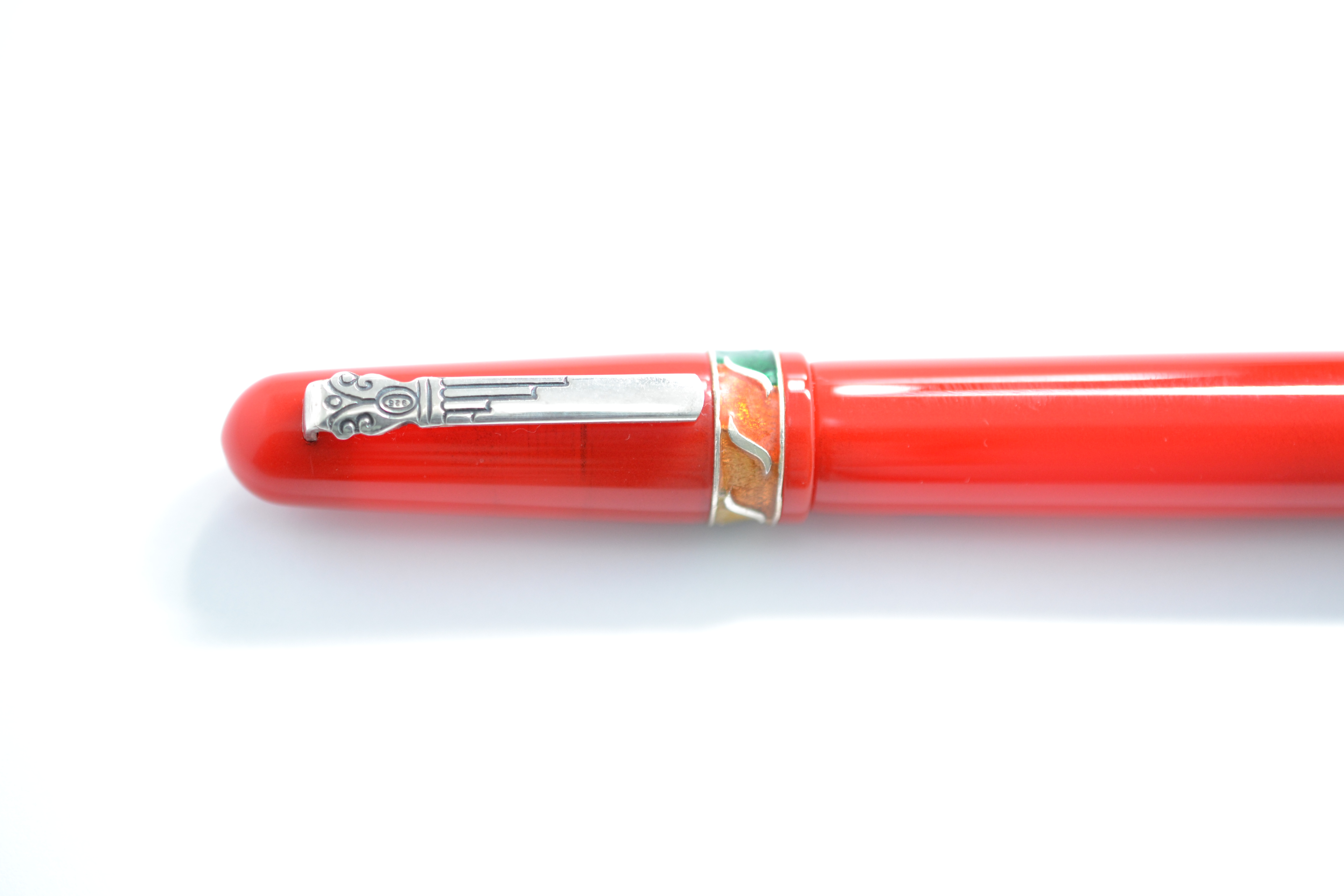Kaweco is famous for its pocket-size pens but they also make a number of nice full-size pens including the Elite I am reviewing today.
I was drawn to the Elite’s large nib, that Kaweco refers to as a size 250 (Bock #6). Most Kaweco pens including many of their other full-size models use a much smaller nib that Kaweco calls size 060, similar to a Bock #5. Kaweco also makes a 14kt solid gold 250 nib but it is not sold with any of their standard pens. You have to buy this nib separately and unlike the steel version, you only get one nib grade, medium.
You may have noticed that my review title says 18kt gold, this is because I ordered a 14kt nib and received an 18kt nib instead. This particular nib is not listed in their parts catalog. From what I can tell the nib I received is an 18kt gold stub nib from the beautiful $1,500 Kaweco King Limited Edition fountain pen. Now that we have sorted out what I am reviewing here, let’s get to the pen.
The Elite features a hand-polished faceted black piano lacquer acrylic body. The acrylic is turned from a single block. I imagine that “black piano lacquer” refers only to the color and high gloss and not the actual use of lacquer. The cap is is chrome and features a black finial with a silver Kaweco “jewel”. This same jewel is also found on the end of the barrel. “Kaweco Elite GERMANY” is printed on the cap in black letters.
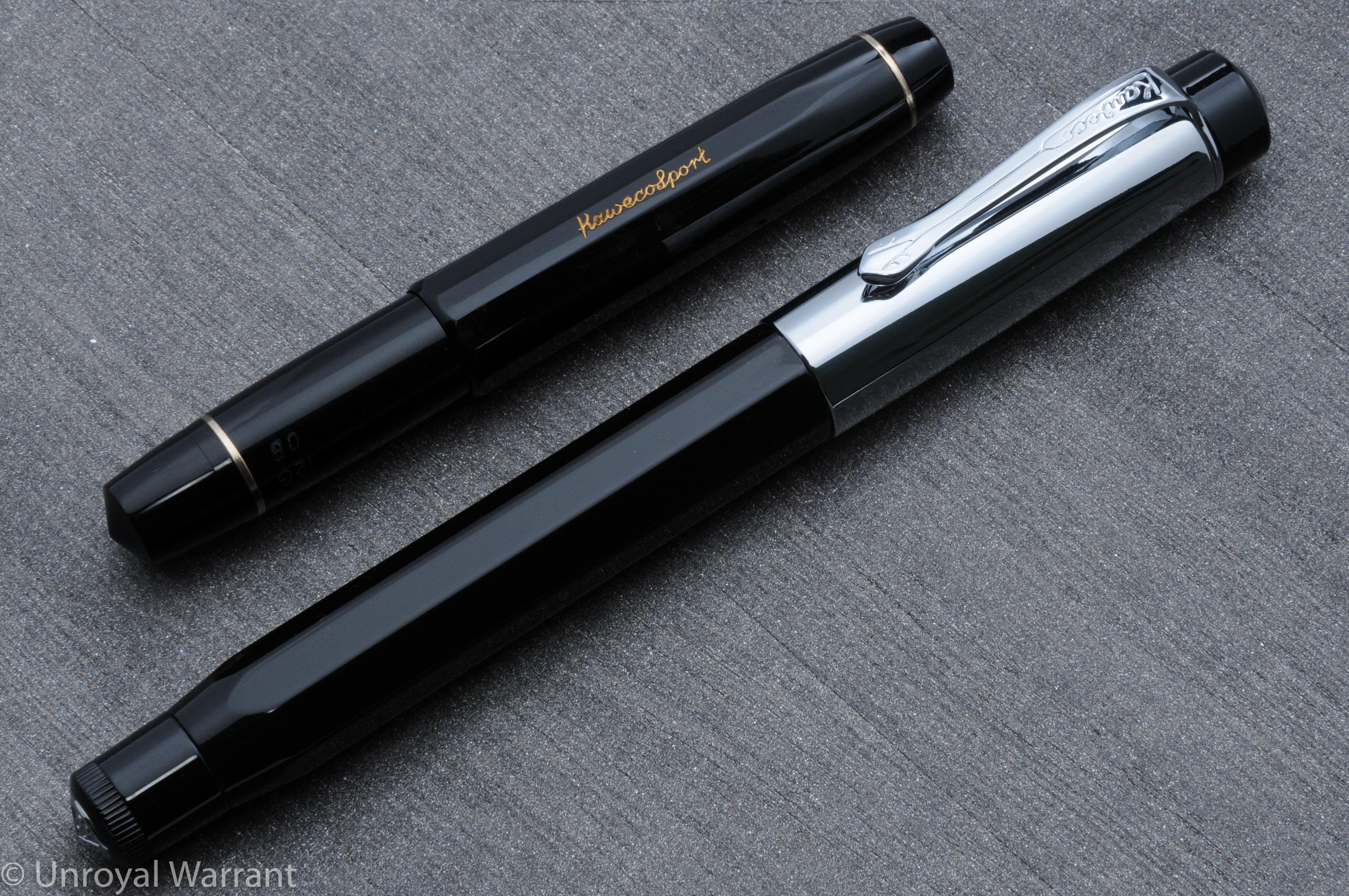
I like the design of this pen; it looks modern and professional. The high gloss acrylic feels silky smooth to the touch. The clip is high quality with a clean imprint and no rough areas.
Even under the clip the finish is flawless. I also like the knurling on the bottom of the barrel.

The Kaweco logo “jewels” on the top of the cap and end of the barrel are not as crisp as I would like and when I compared it to my vintage Kaweco Sport there was a noticeable difference; a small gripe but none-the-less worth pointing out.
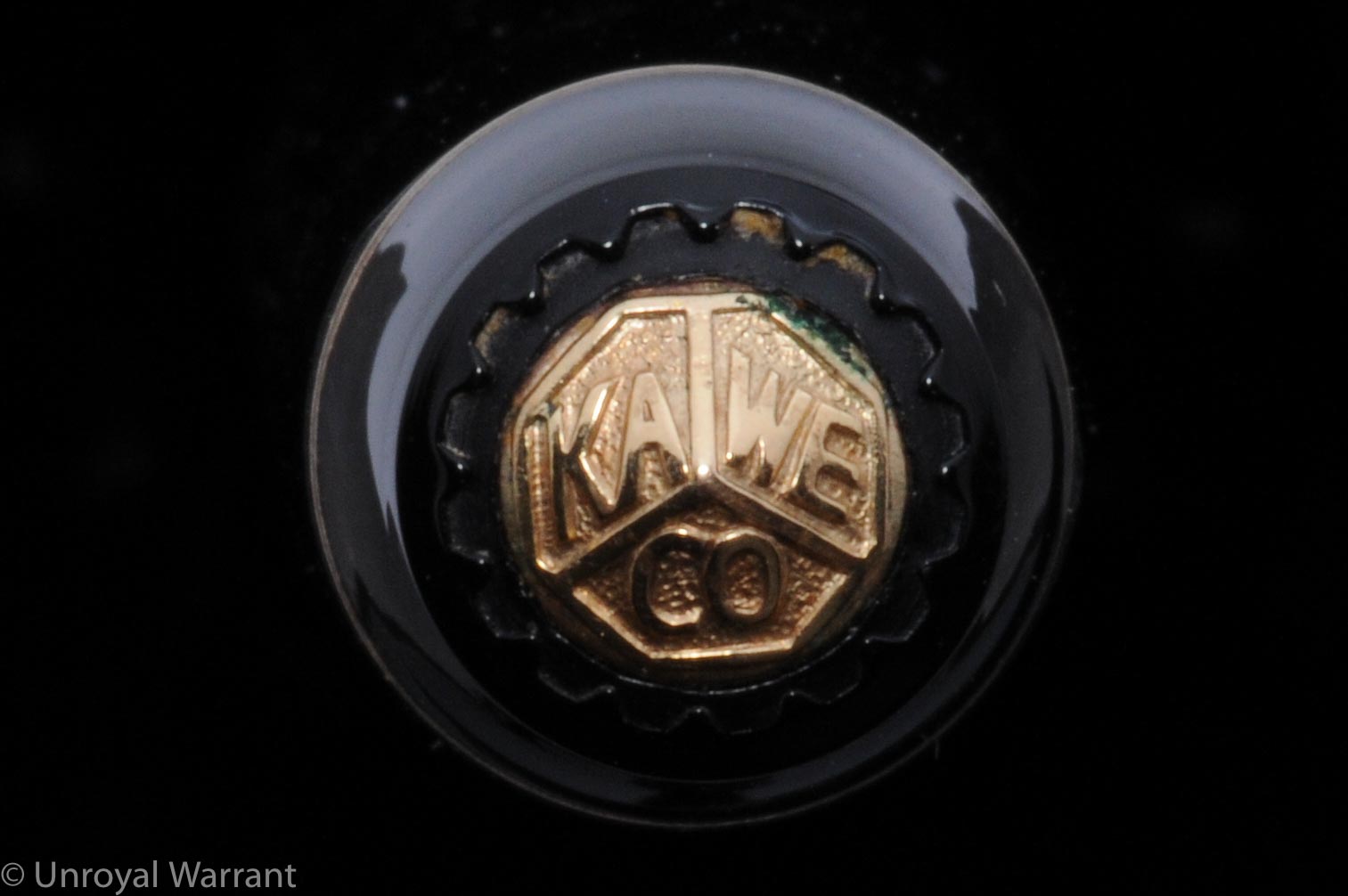
The Elite weighs approximately 39 grams with the cap responsible for 18.5 of them; this makes the Elite on the heavy side. To use this pen comfortably I had to write with the cap off.
Posting the cap makes the pen very top heavy and the cap does not sit very far down the barrel, so it’s length exacerbates the balance problem.
With the cap off the Elite is very comfortable with its long acrylic grip section. The Elite measures 13.8mm long capped and about 13.4mm uncapped.
The 18kt gold nib is writes smoothly and is a good performer. I find that it does write on the drier side (something I will likely adjust later) and that it can take a bit of work to get the ink flowing when a new cartridge is inserted. Once it starts flowing the nib works great and is a pleasure to write with. The 18kt gold nib has some spring but I wouldn’t say that it’s particularly soft.
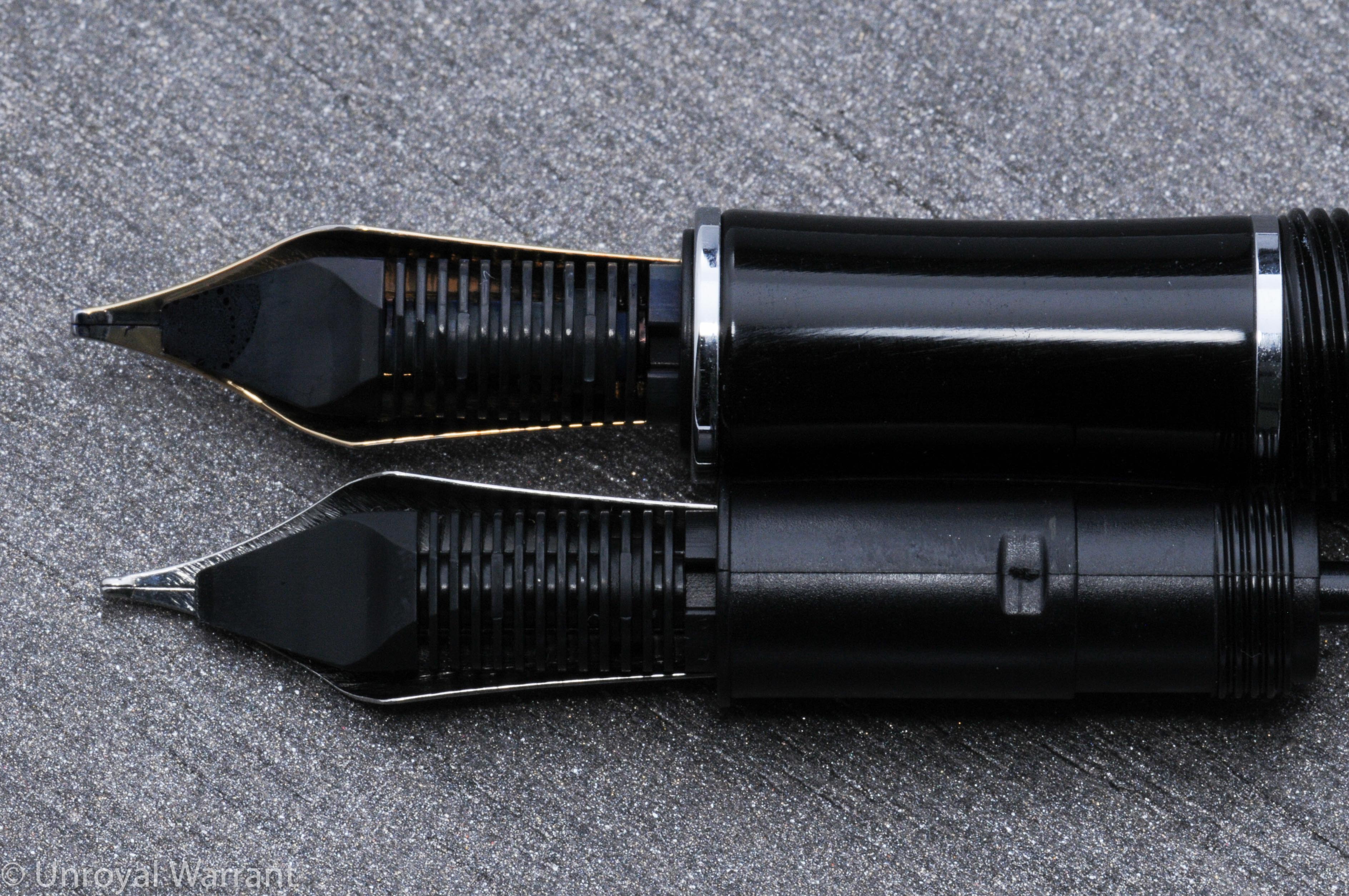
The nib shares the same plastic feeder as the steel nib. The nibs are threaded like those from Pelikan and Aurora, making nib swaps a breeze.

The Elite can hold two short international cartridges and interestingly there is a spring inside the barrel, something I haven’t seen on any other fountain pen. This spring is useful in getting the second cartridge out of the barrel.
The Elite is not sold with a converter. I tried a standard Bock converter which fit onto the section but was too fat for the barrel. Luckily I have a Kaweco converter and surprise, surprise, it fit. I did find that the converter regularly removed the spring when I unscrewed the section. I would recommend removing the spring if you use a converter.
The Elite fountain pen has a street price of $150, while the 14kt gold nib (again, only sold separately) costs about $200. In the $150 price bracket there are lots of excellent pens, like the Lamy 2000 and the Pilot Vanishing Point. I find that Kaweco Elite stands up to these pens nicely. It really comes down to preference.
But what about the $200 gold nib? The problem for me is that the steel nib is really good. If we were talking an extra $50 then I would go for the gold but from a writing perspective the gold nib isn’t enough of an improvement to justify it’s high price.
Please note: this pen was provided to me by Kaweco at a subsidized cost for purposes of this review.
Here are some other great reviews of the Kaweco Elite fountain pen:
(I have no affiliation with any of the sites linked below)
The Pencilcase Blog – Kaweco Elite Fountain Pen
The Gentleman Stationer – Pen Review: Kaweco Elite
My Pen Needs Ink – Kaweco Elite – Pen Review
Pens! Paper! Pencils! – Kaweco Elite fountain pen review
Gourmet Pens – Review: @Kaweco Elite Fountain Pen – Medium @JetPens


